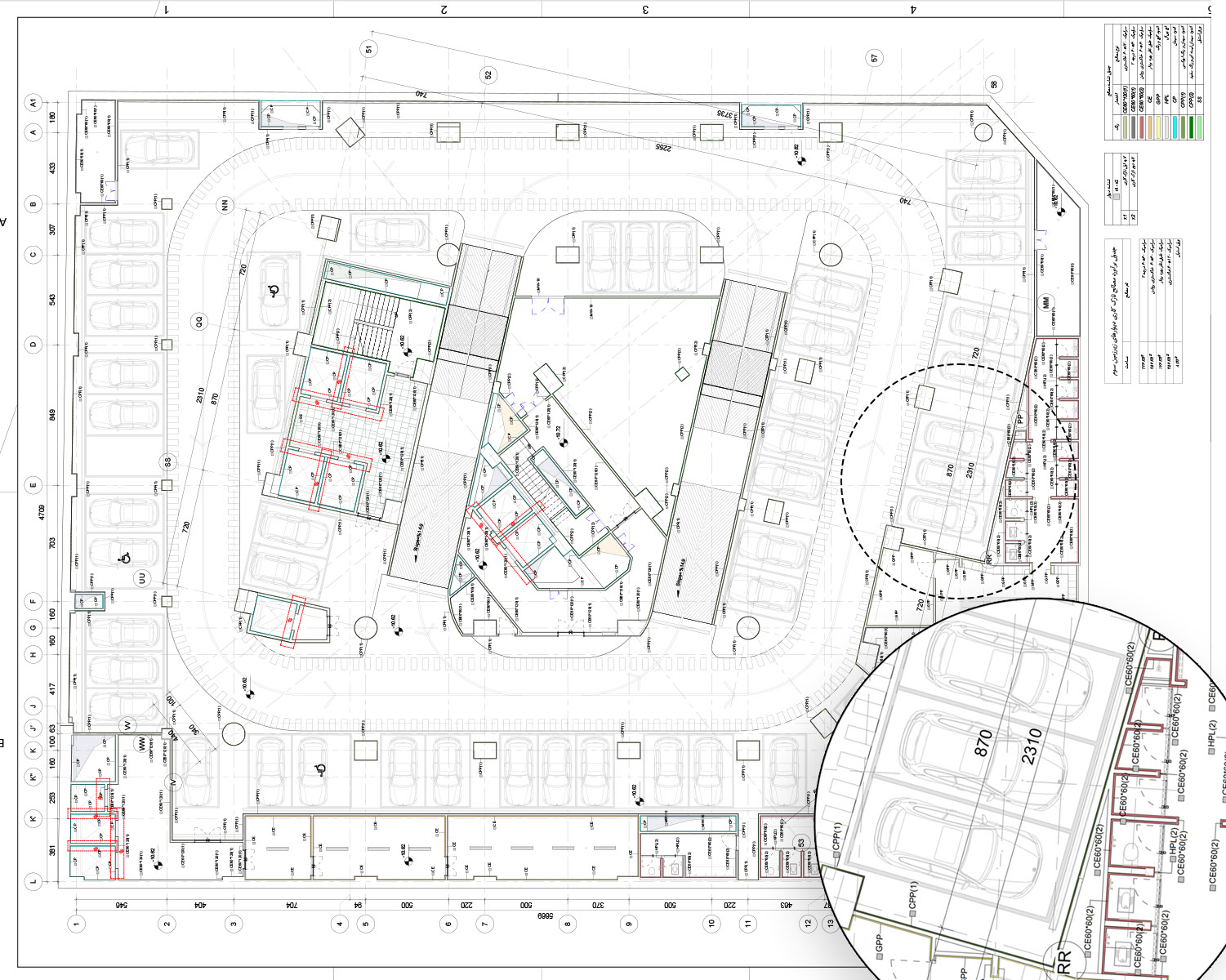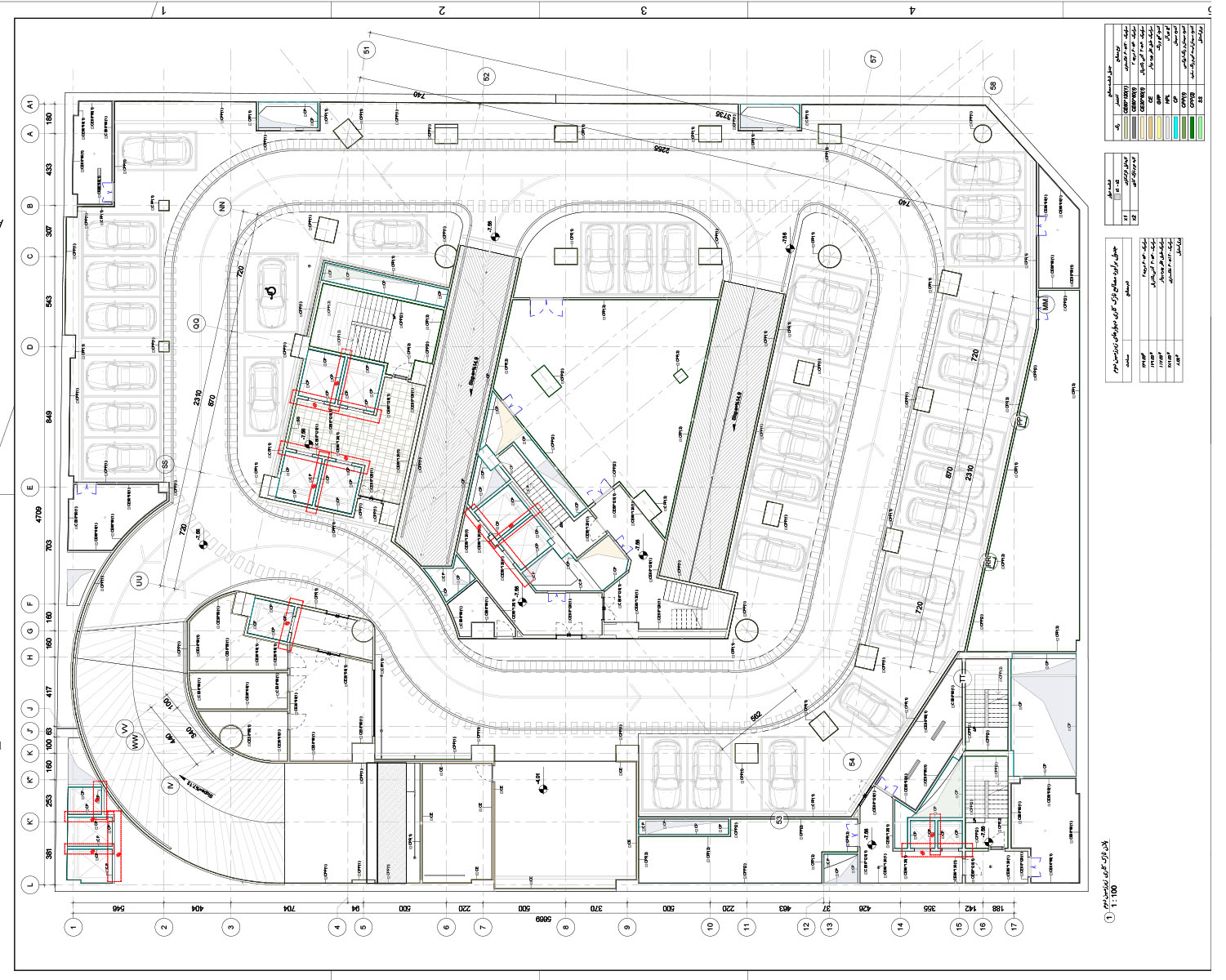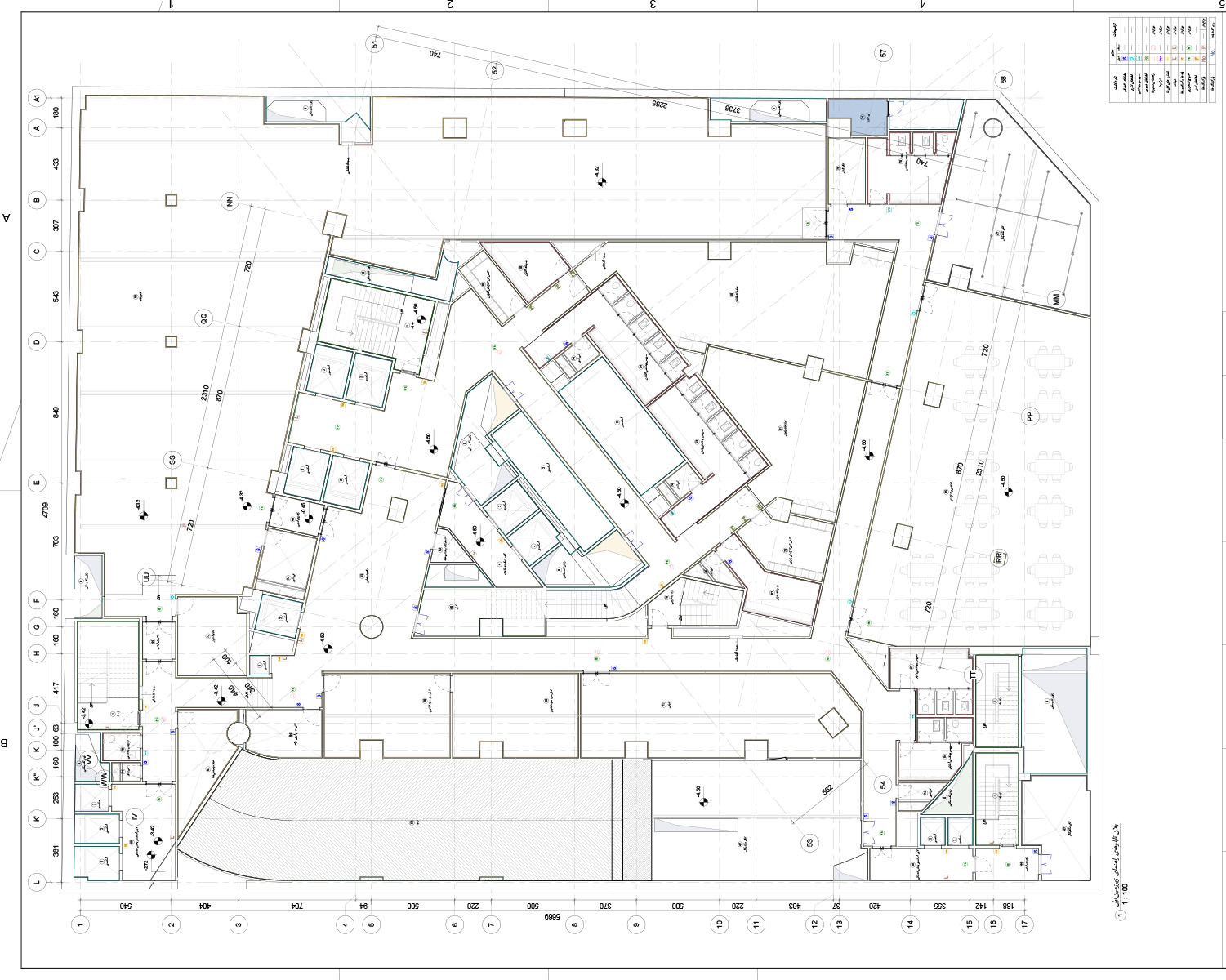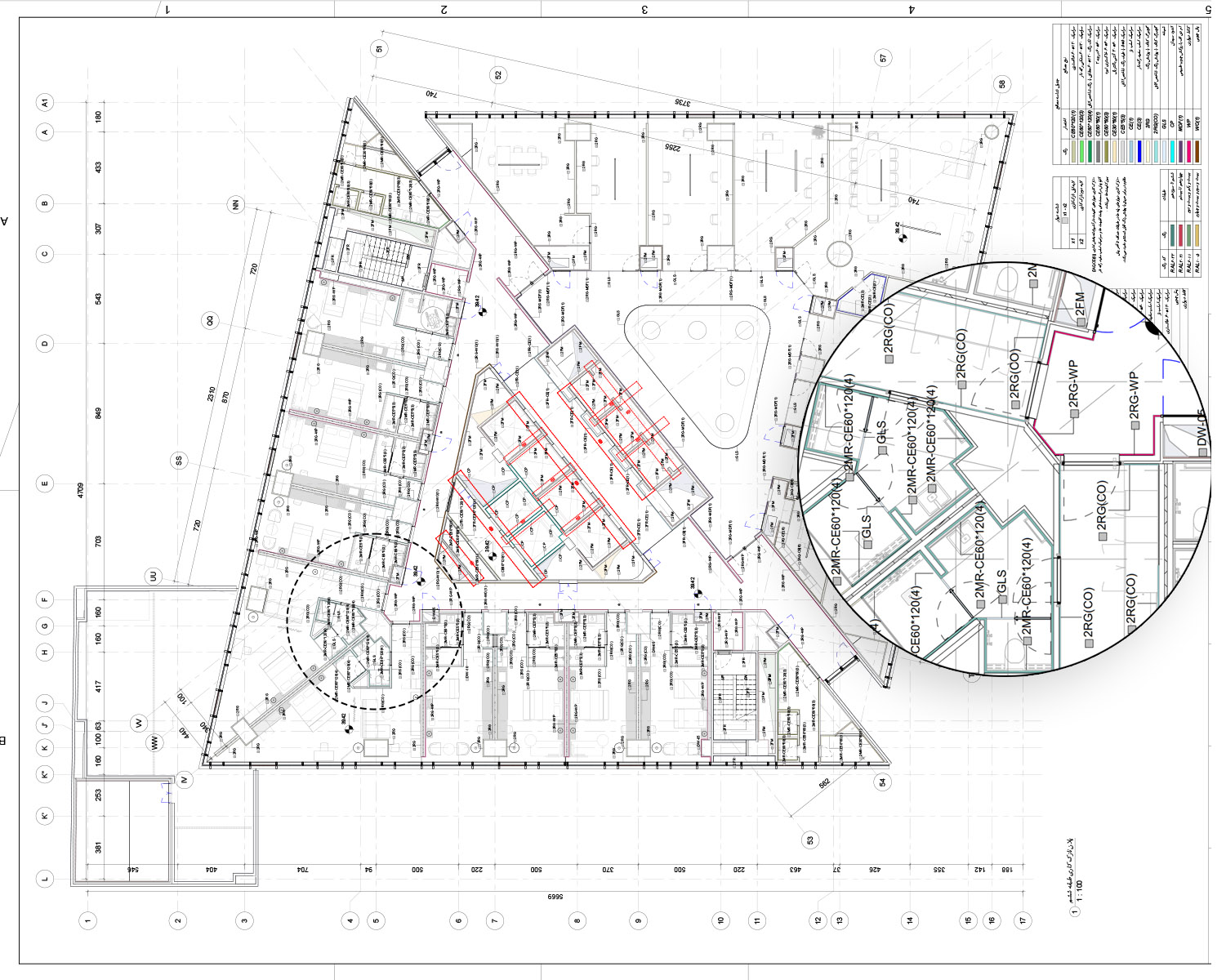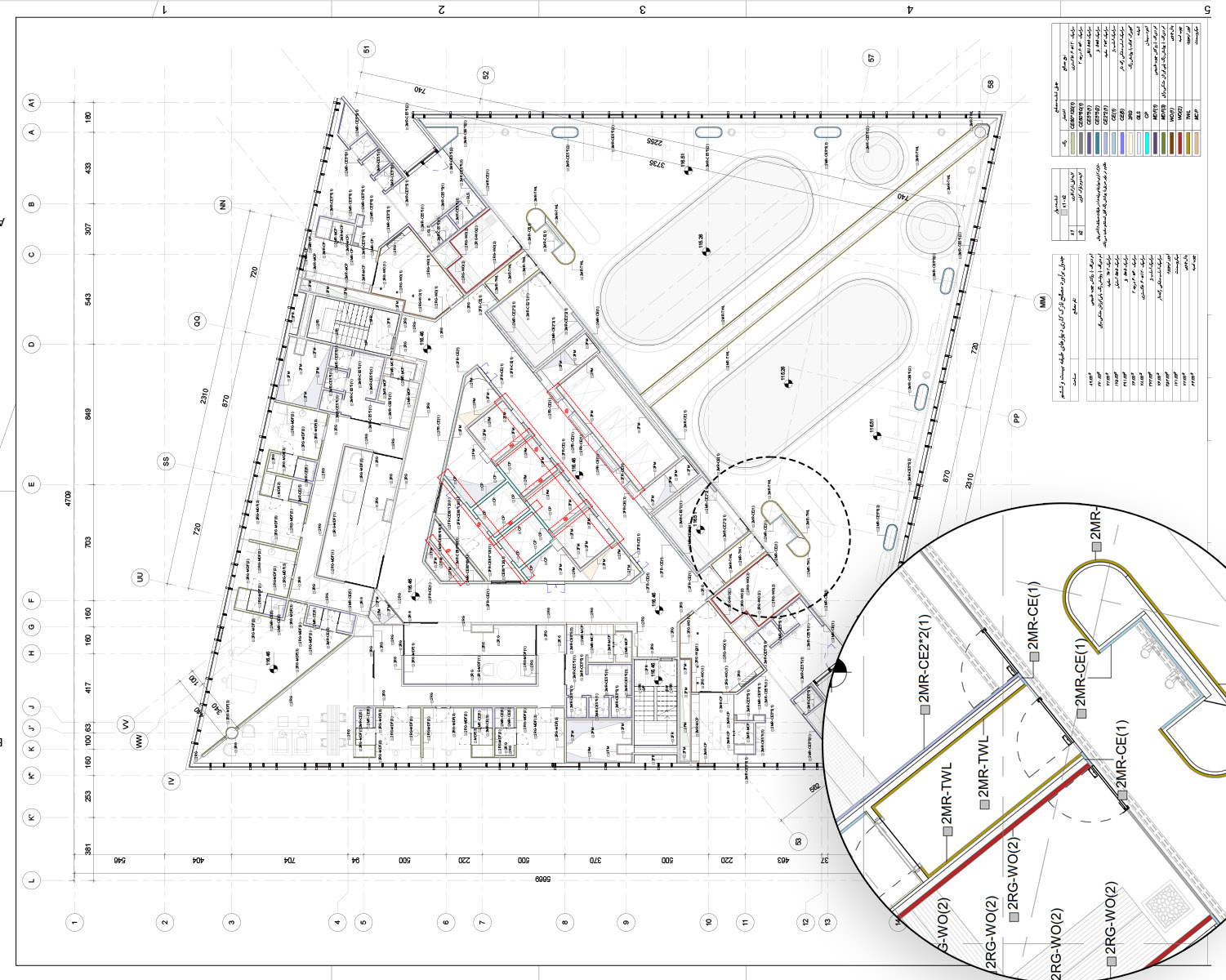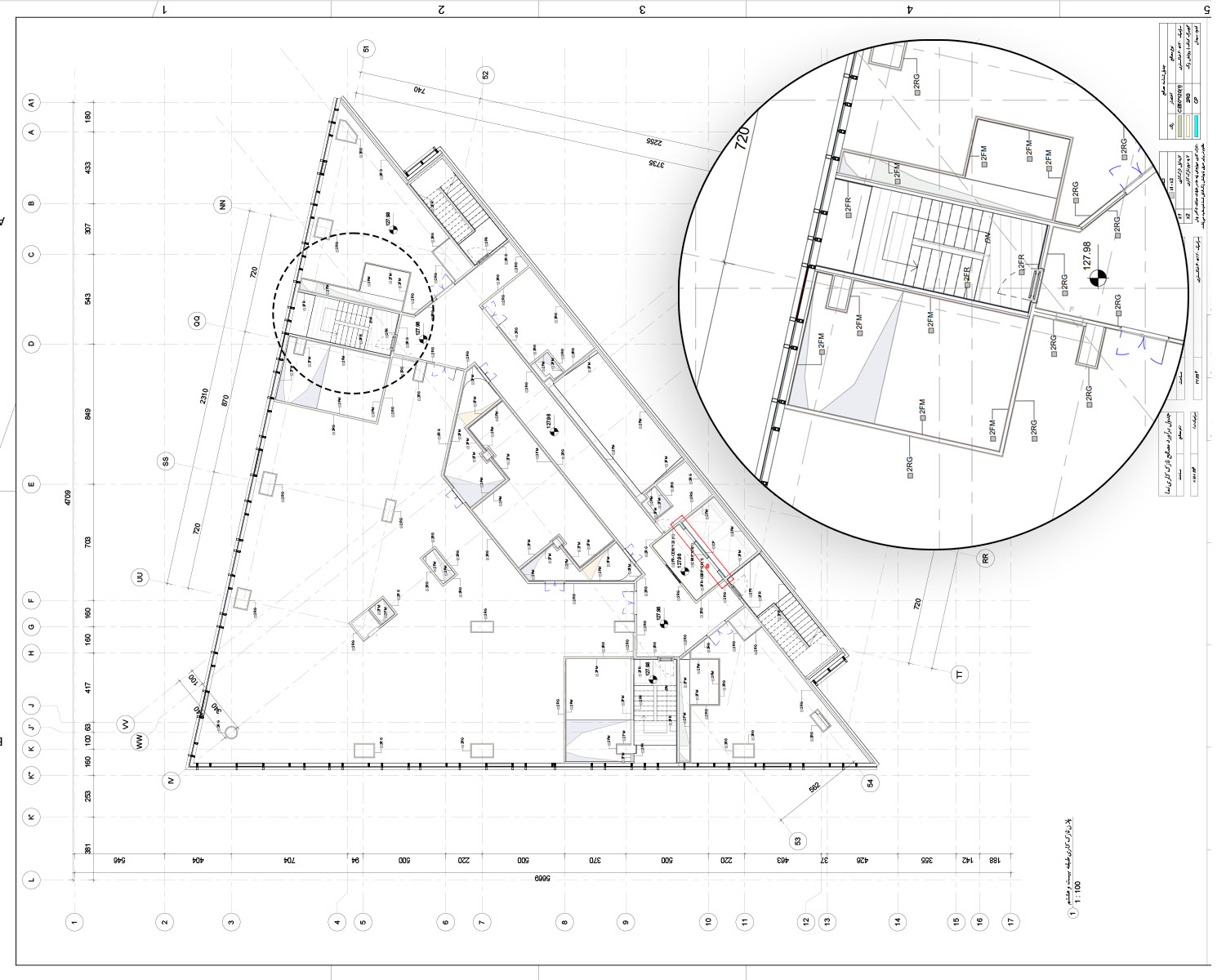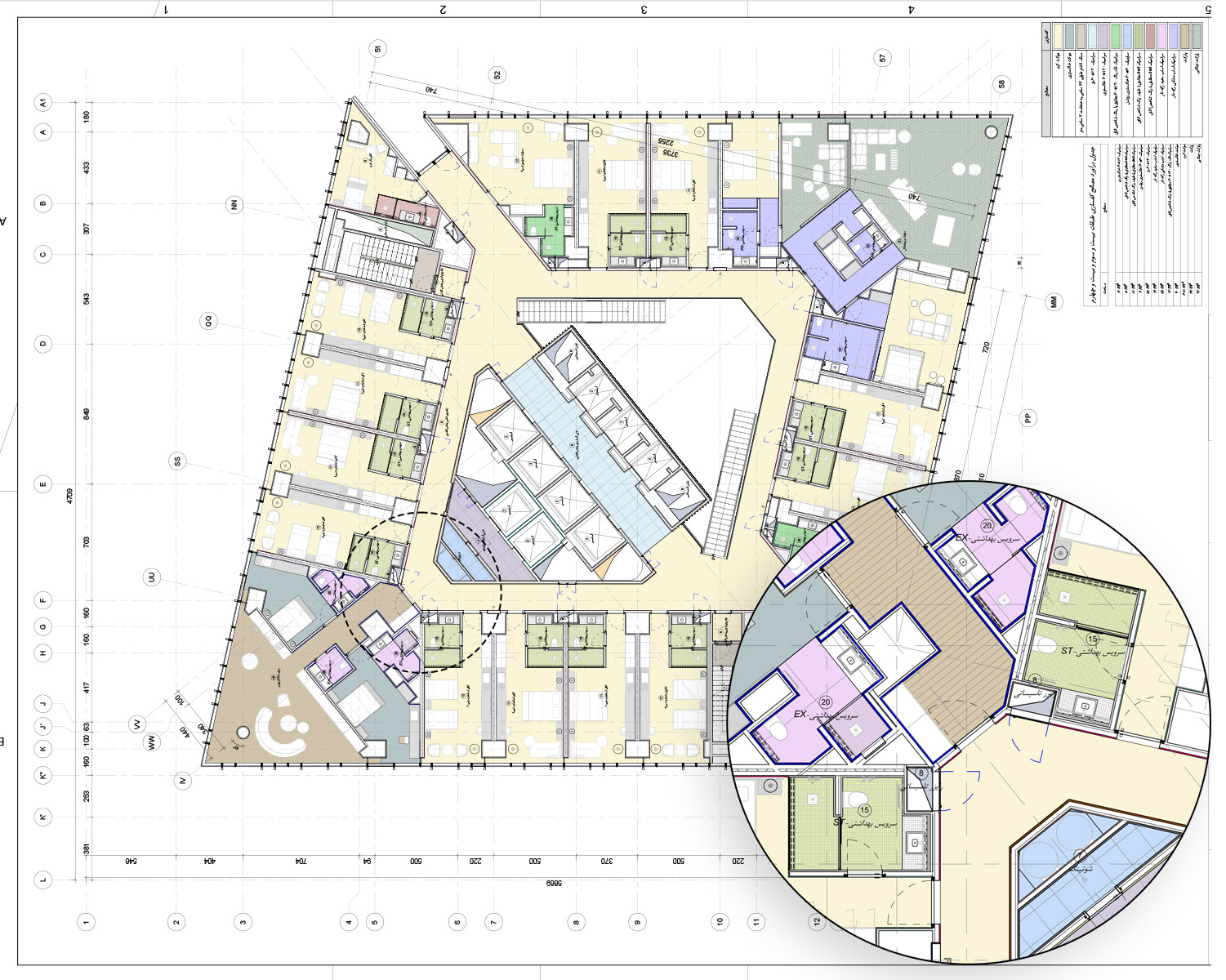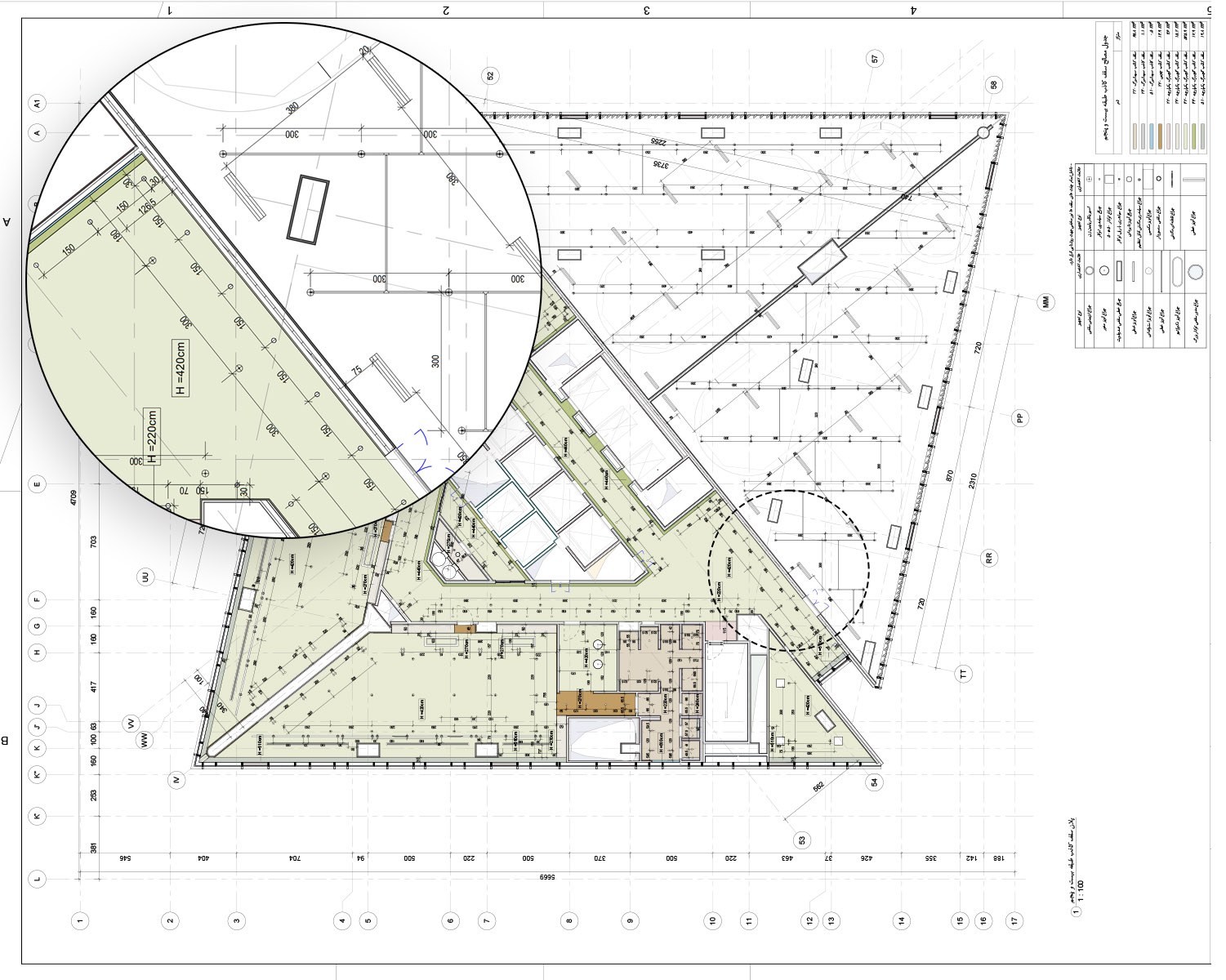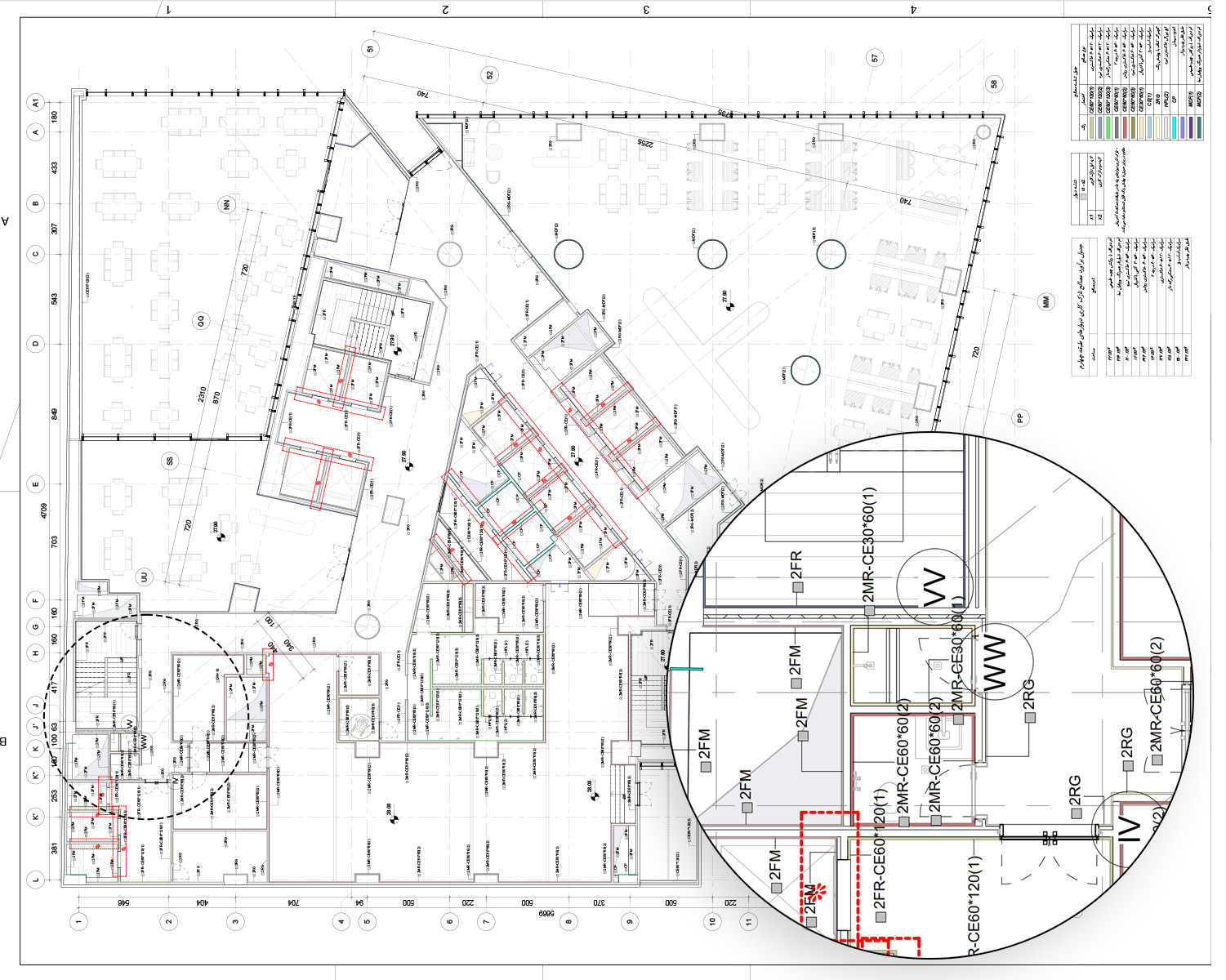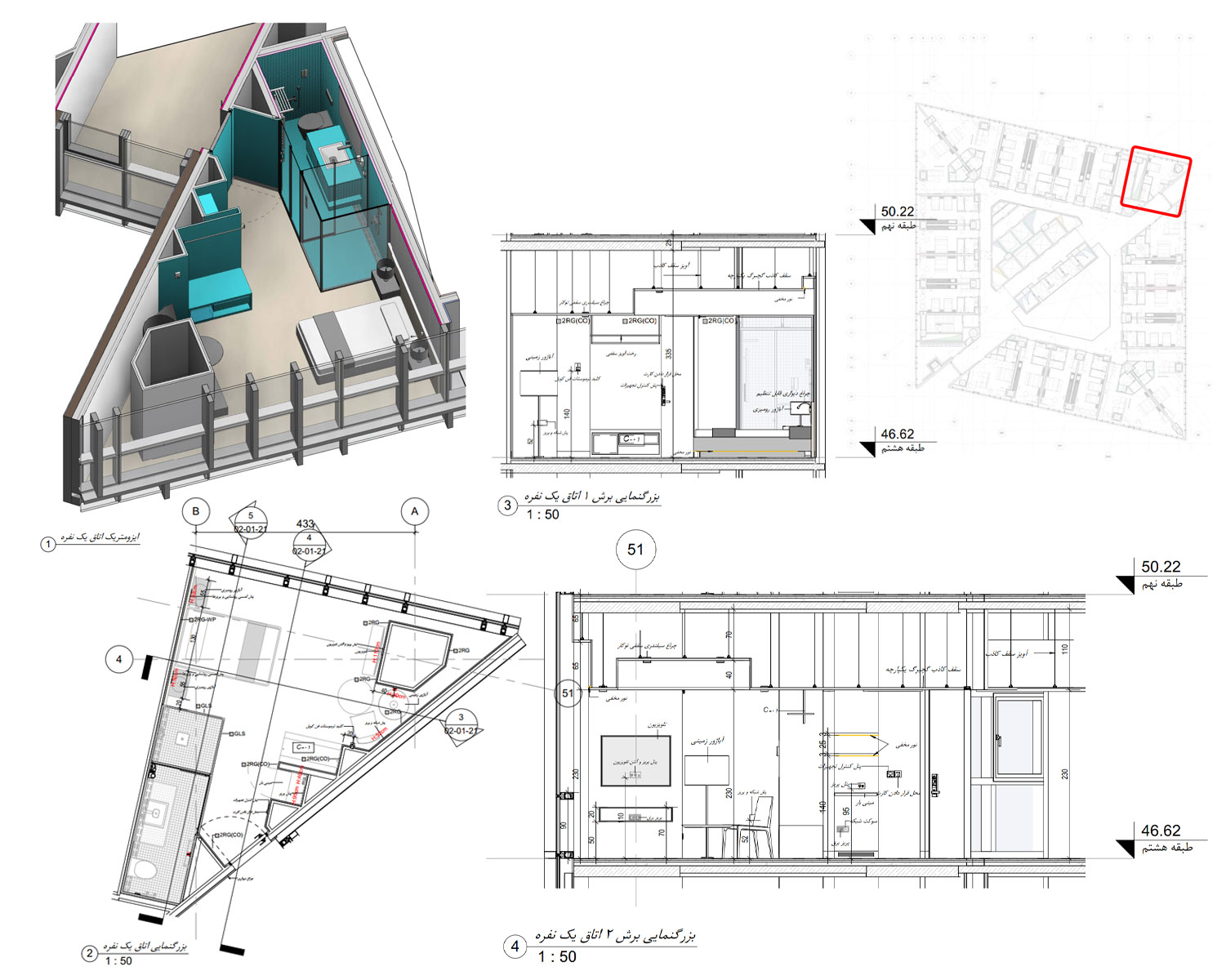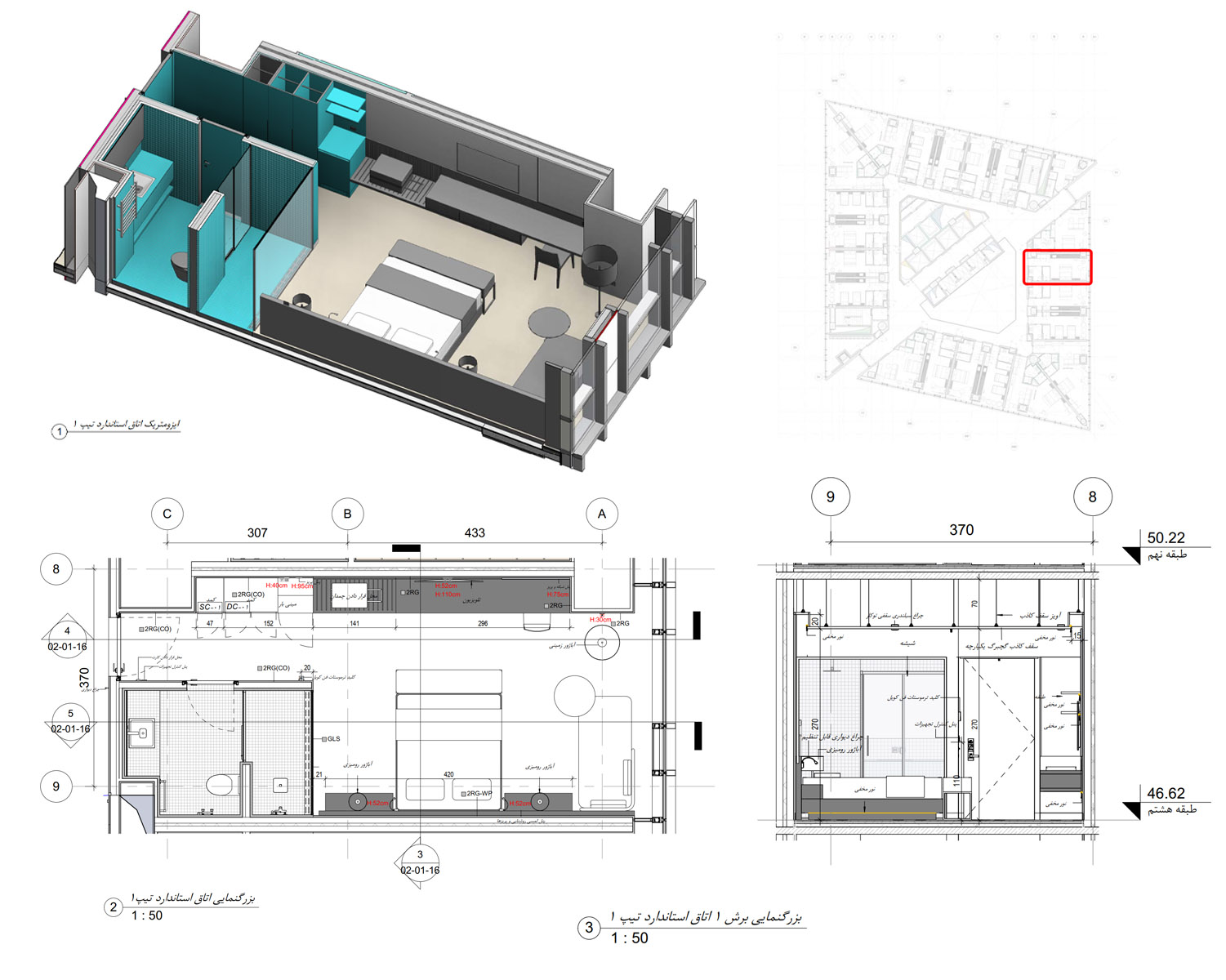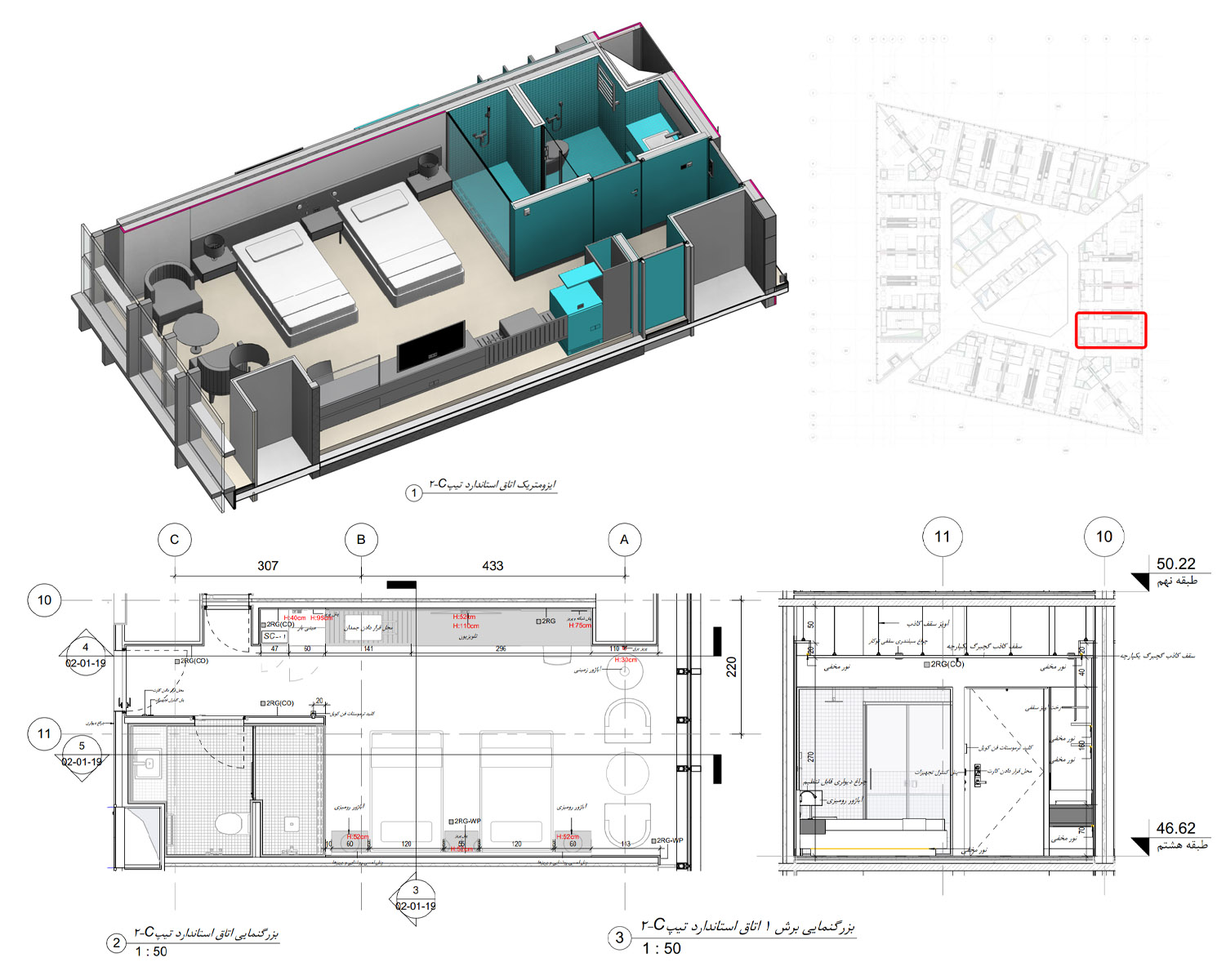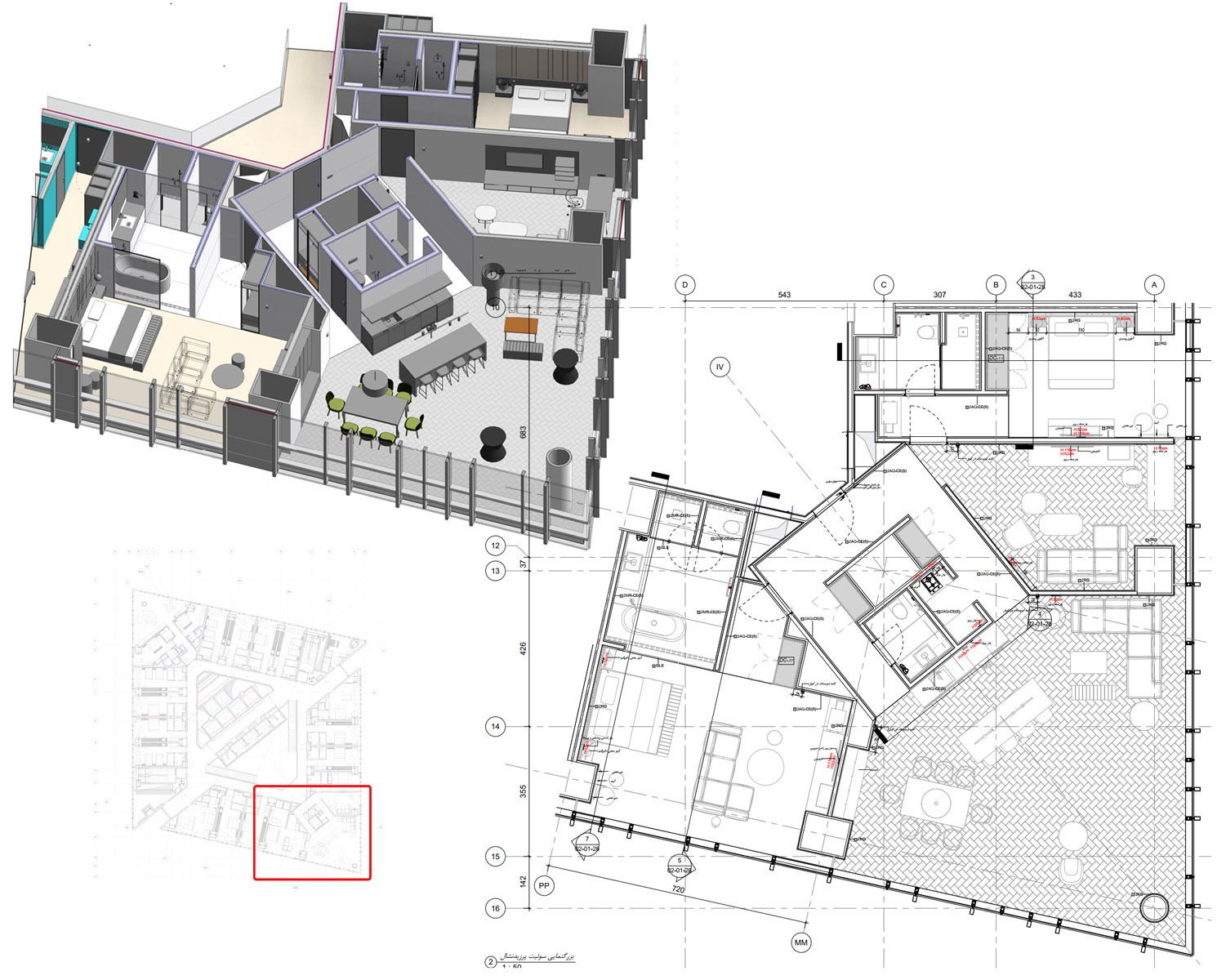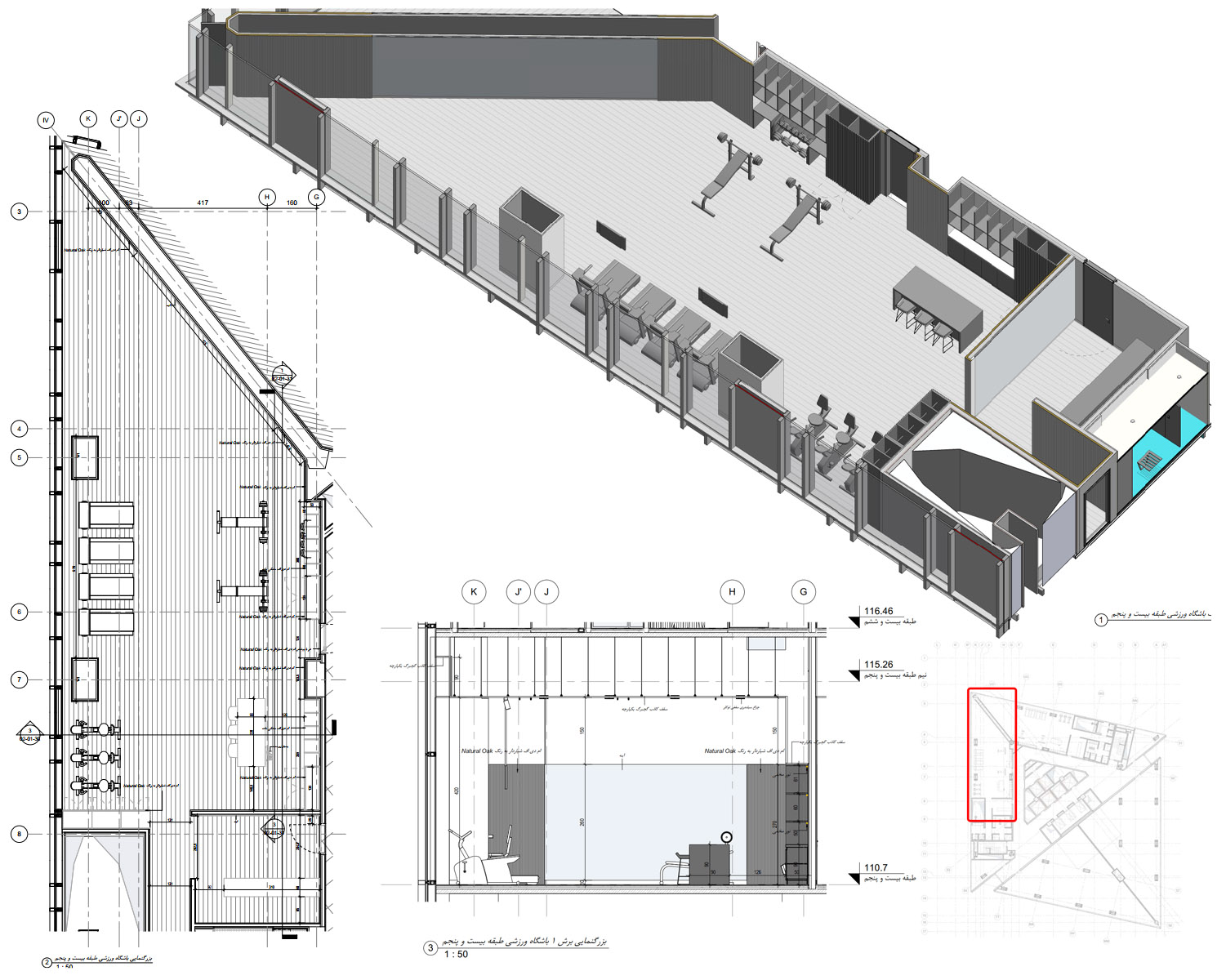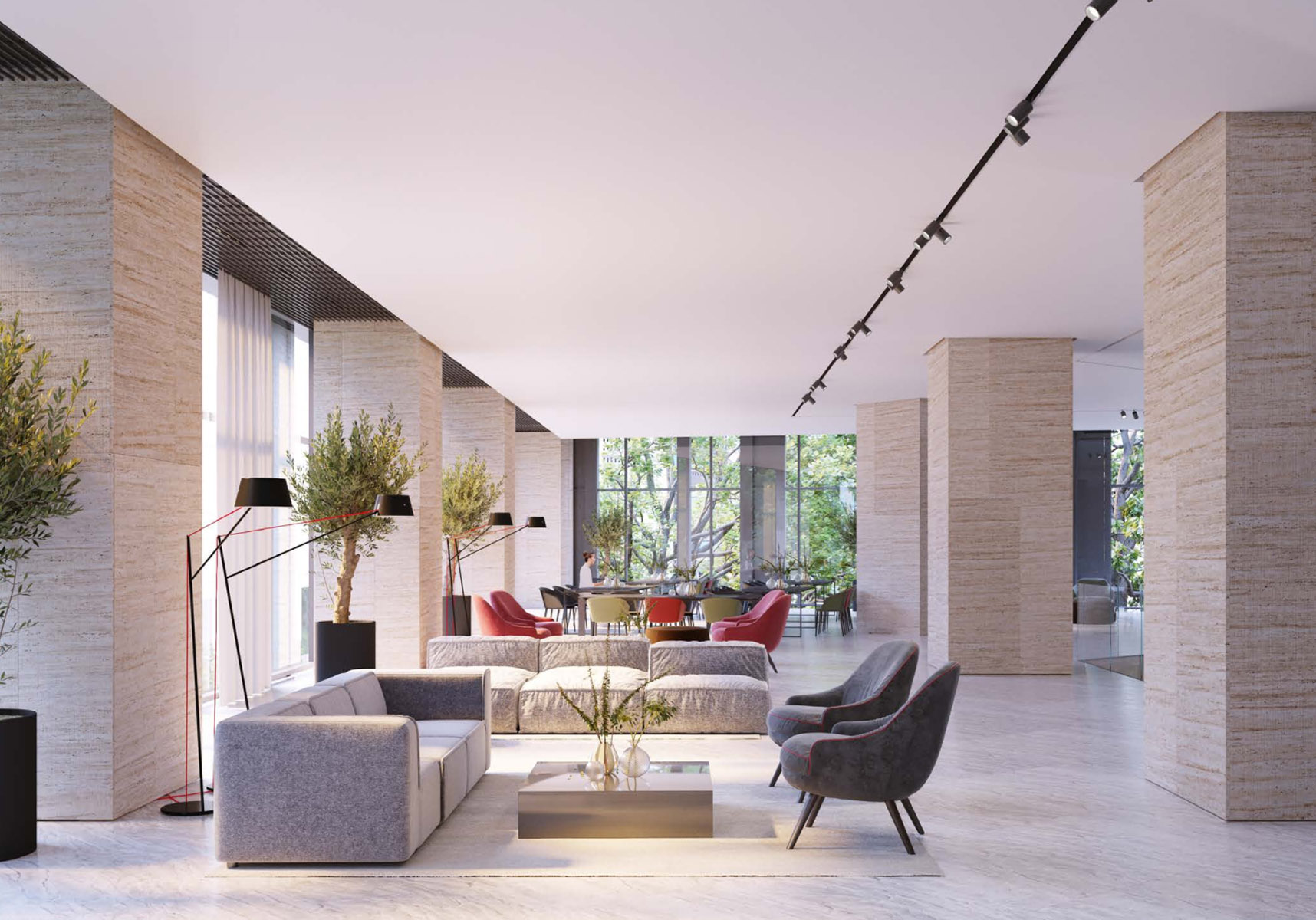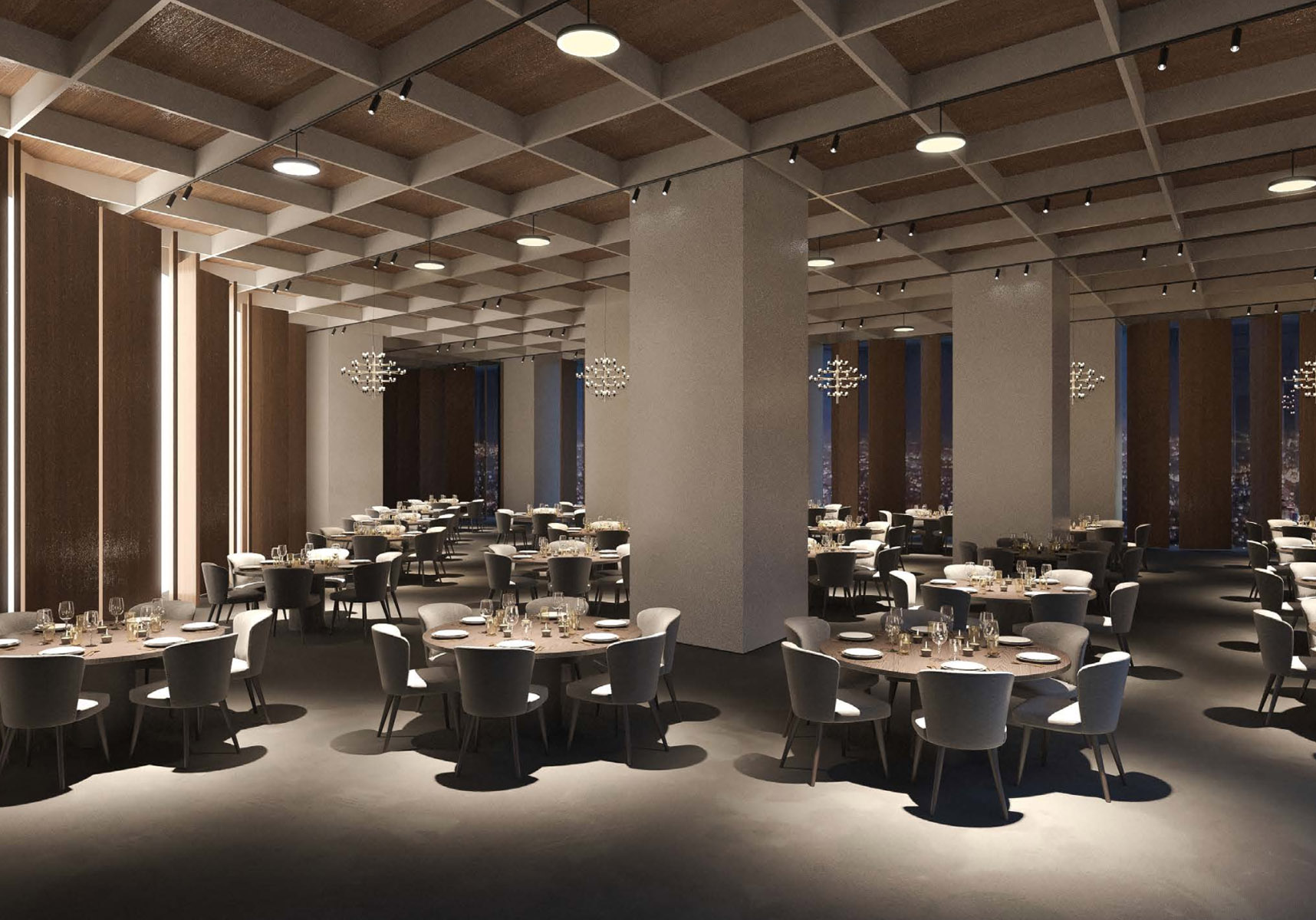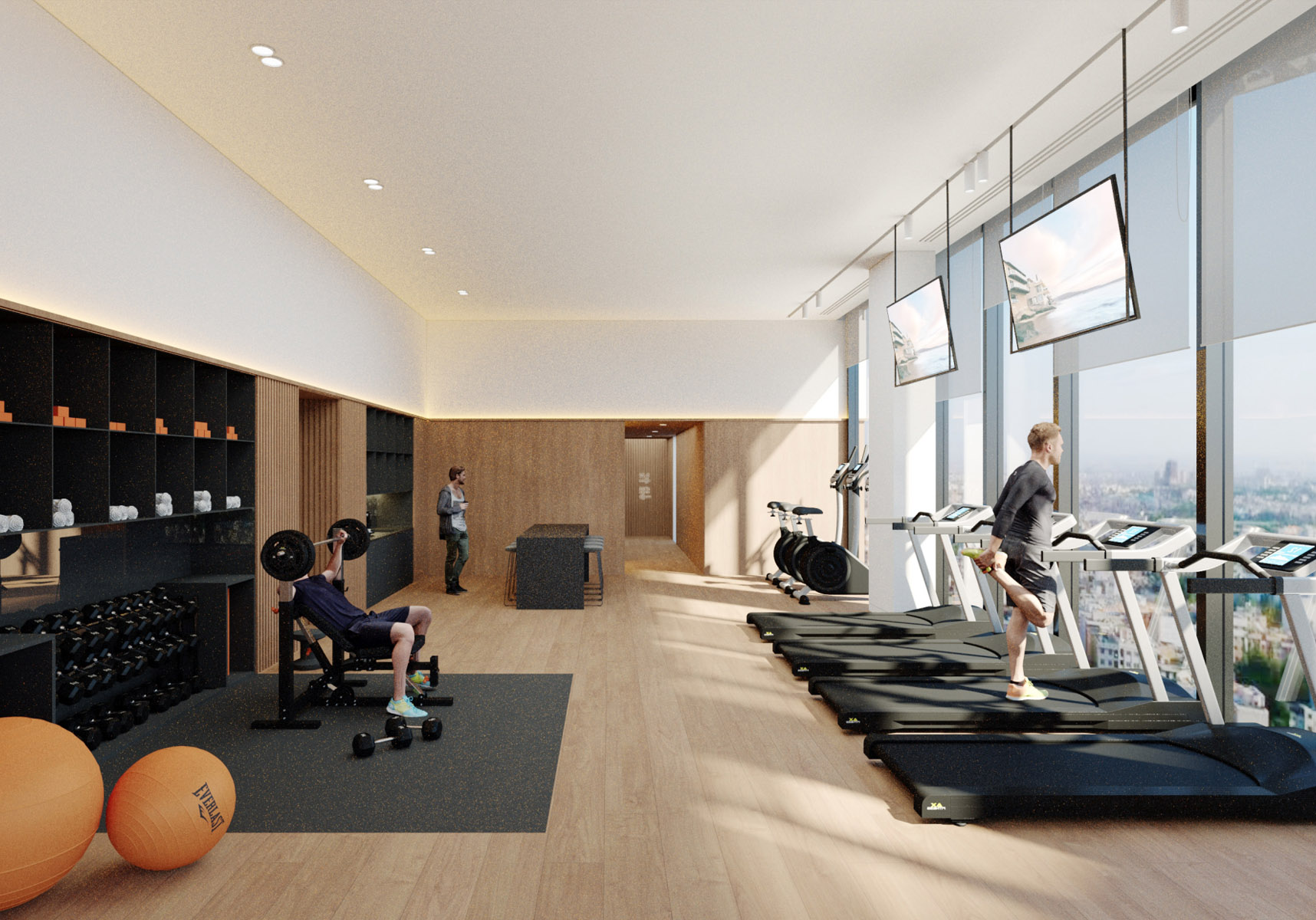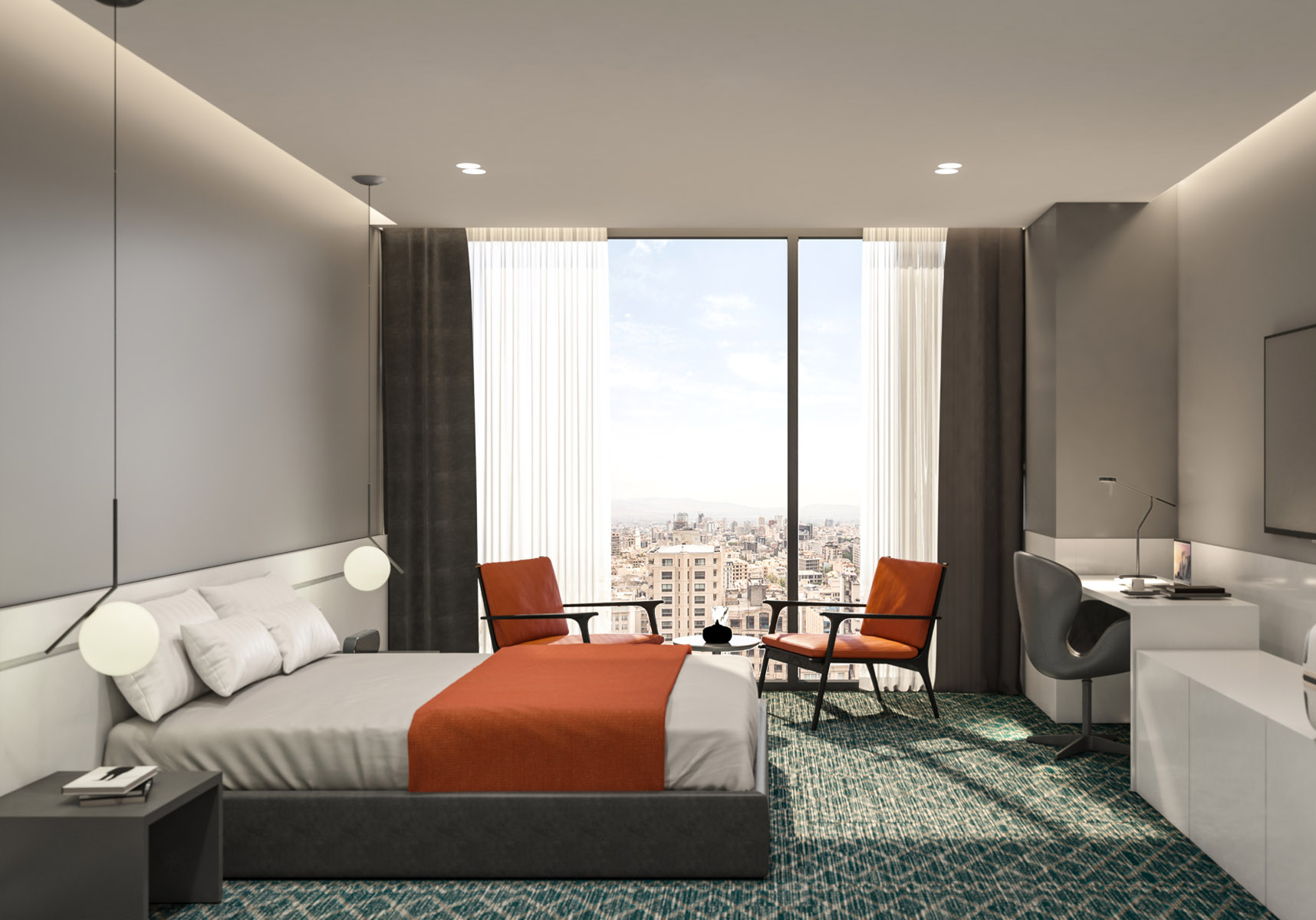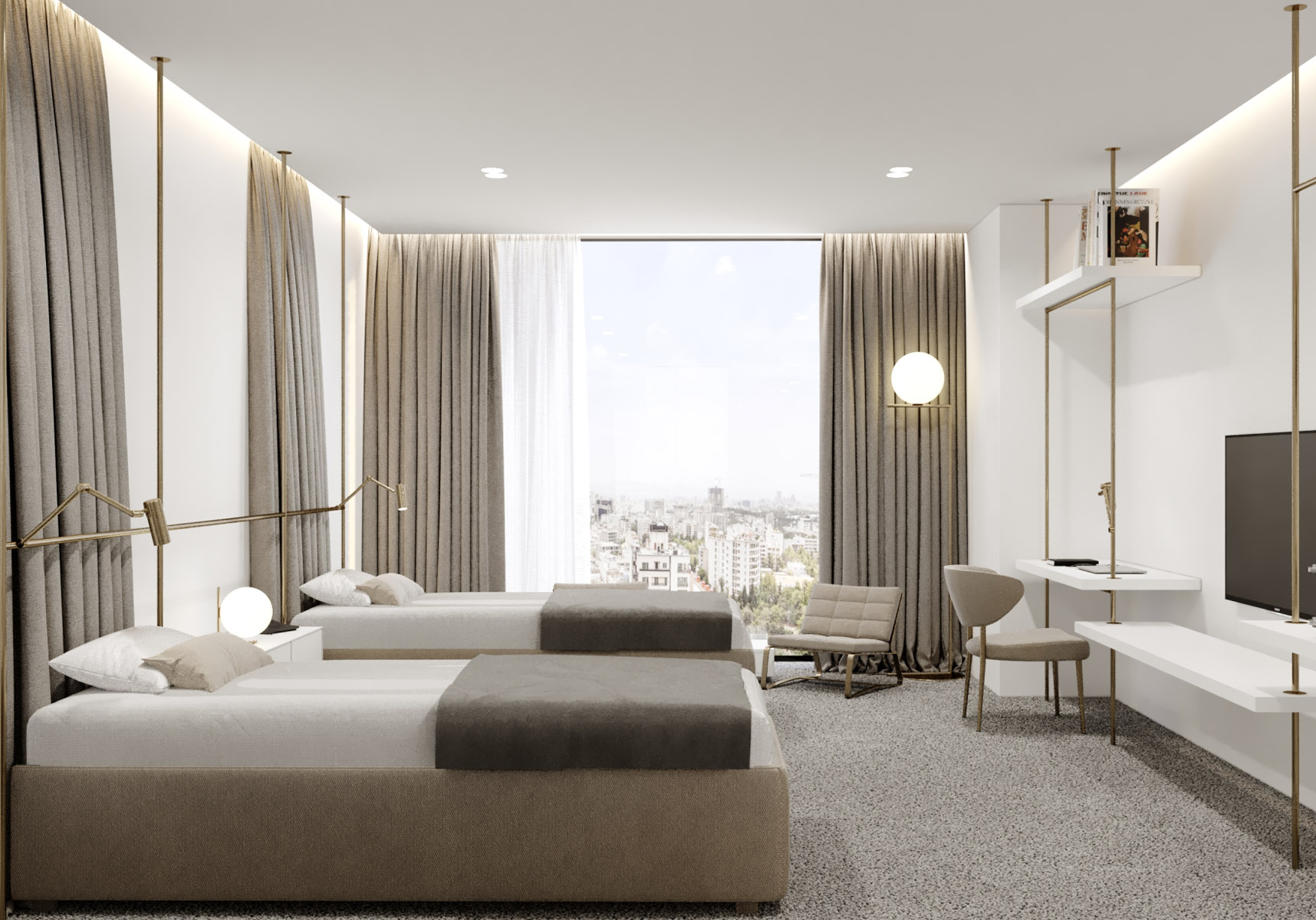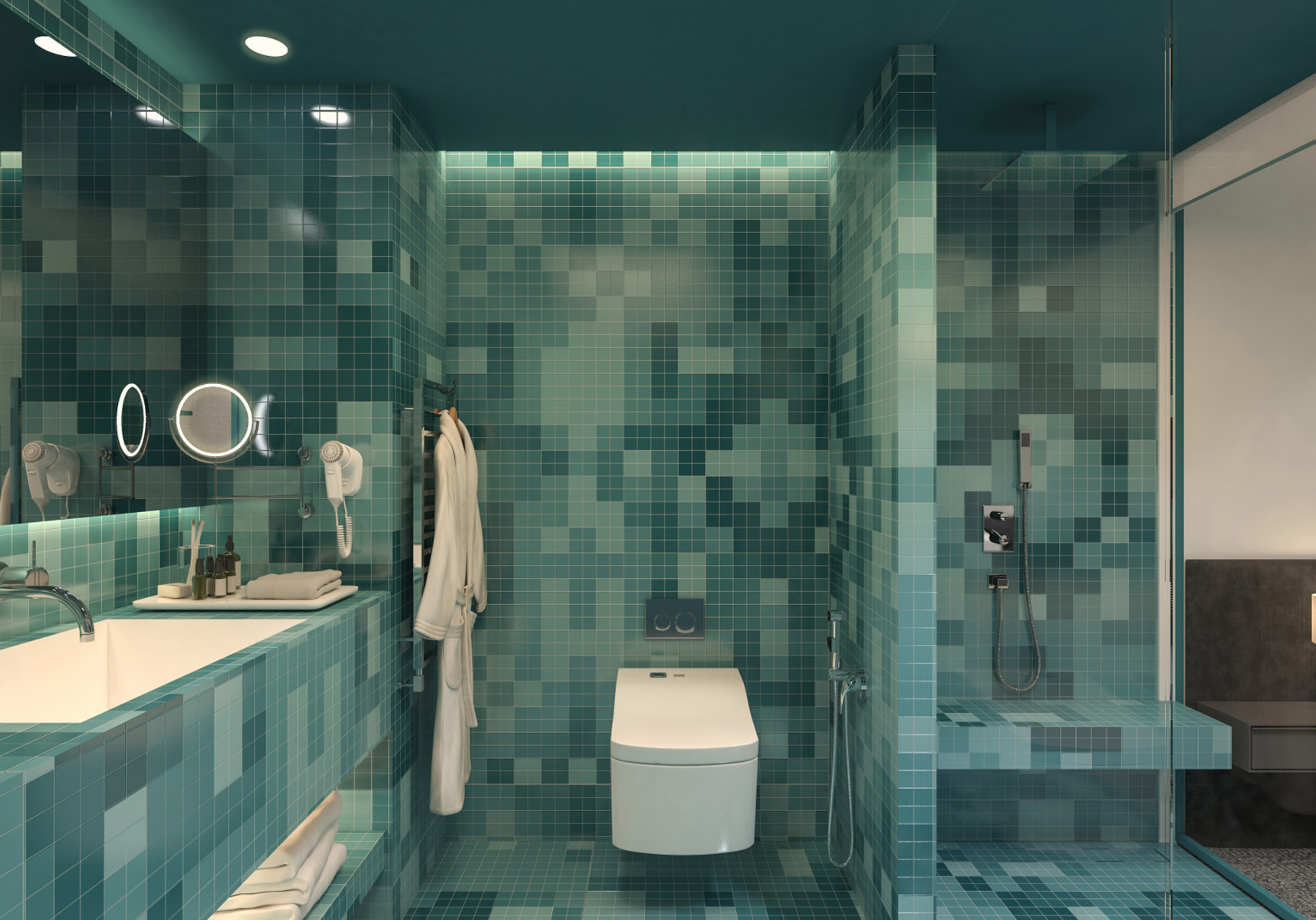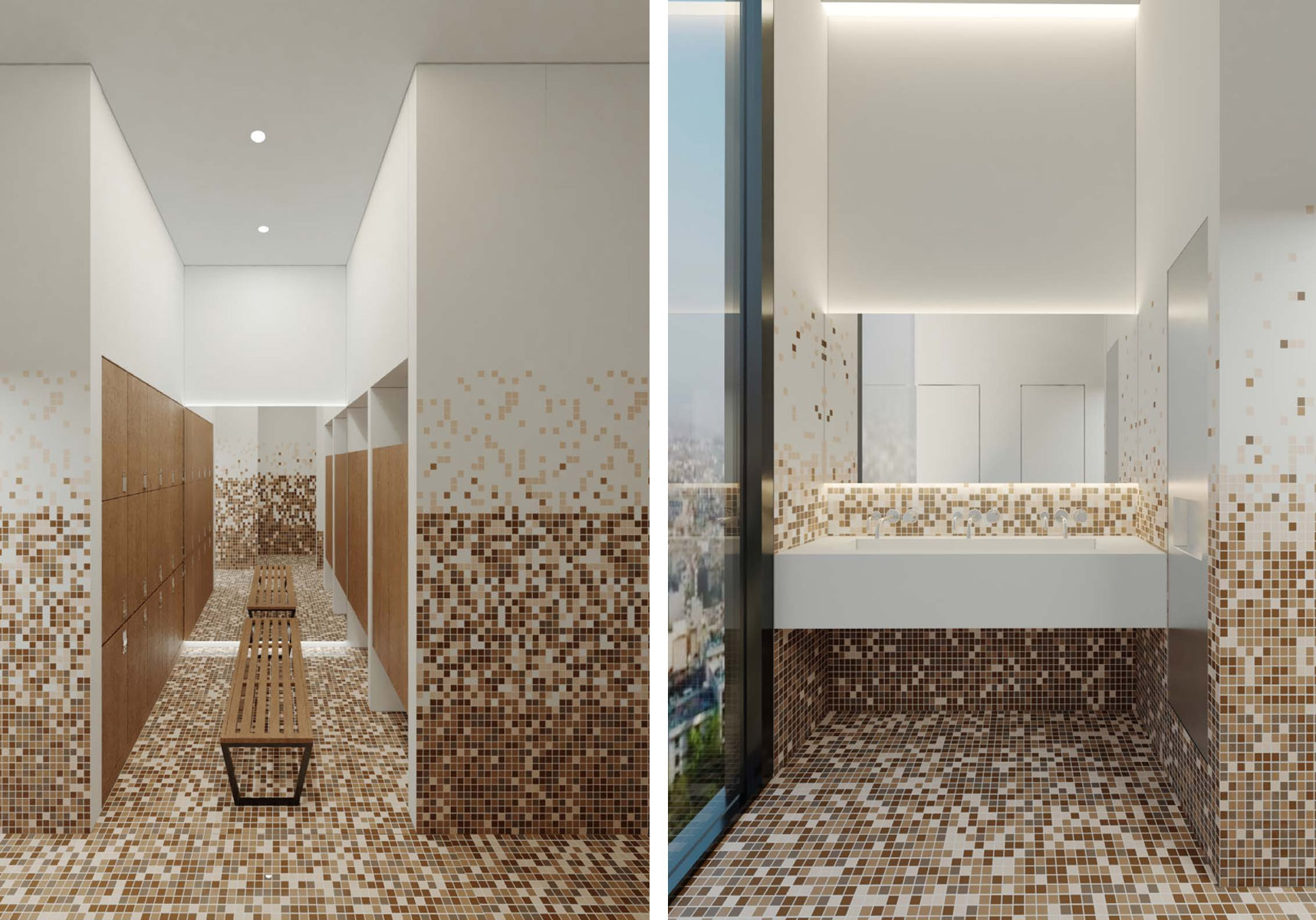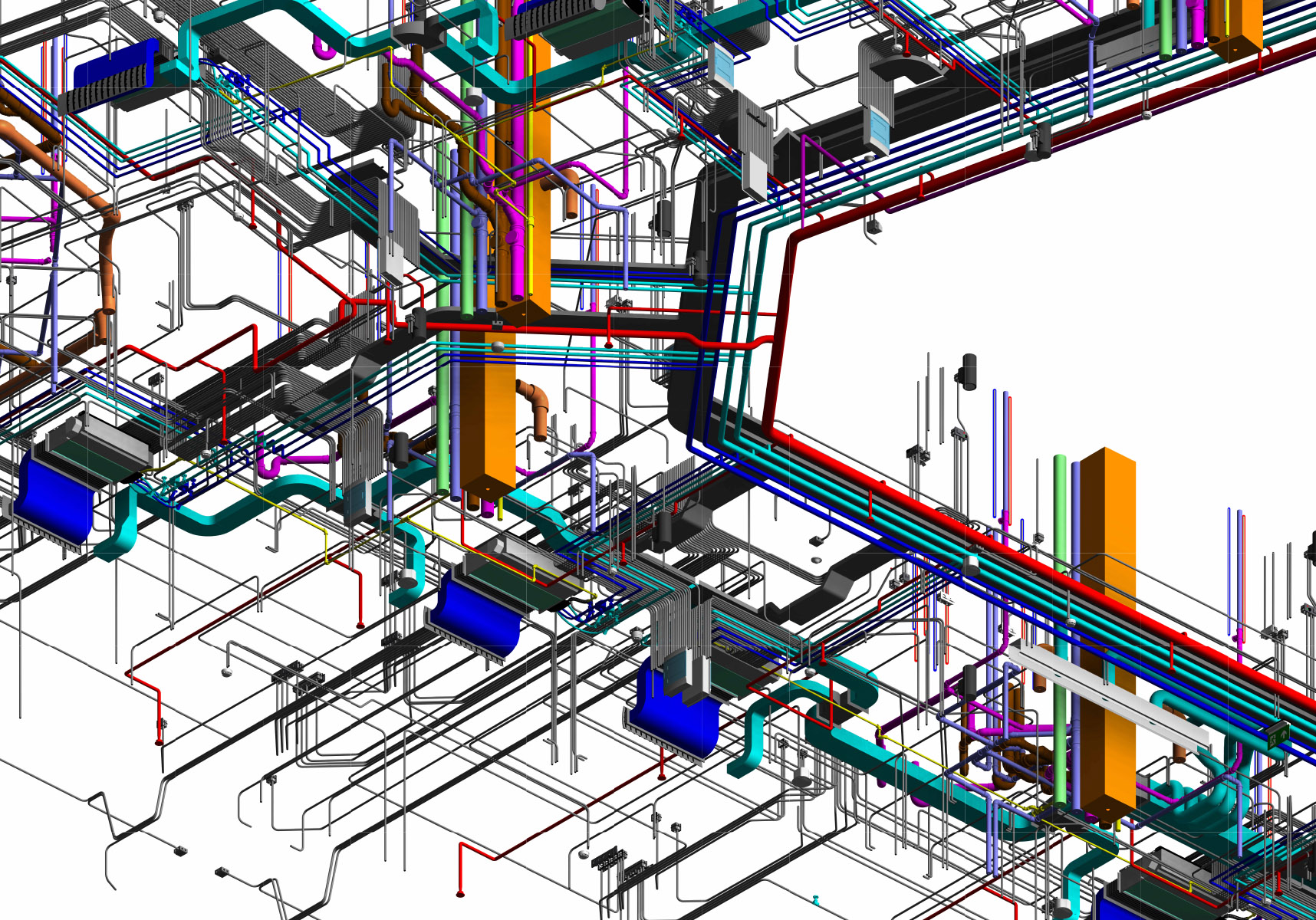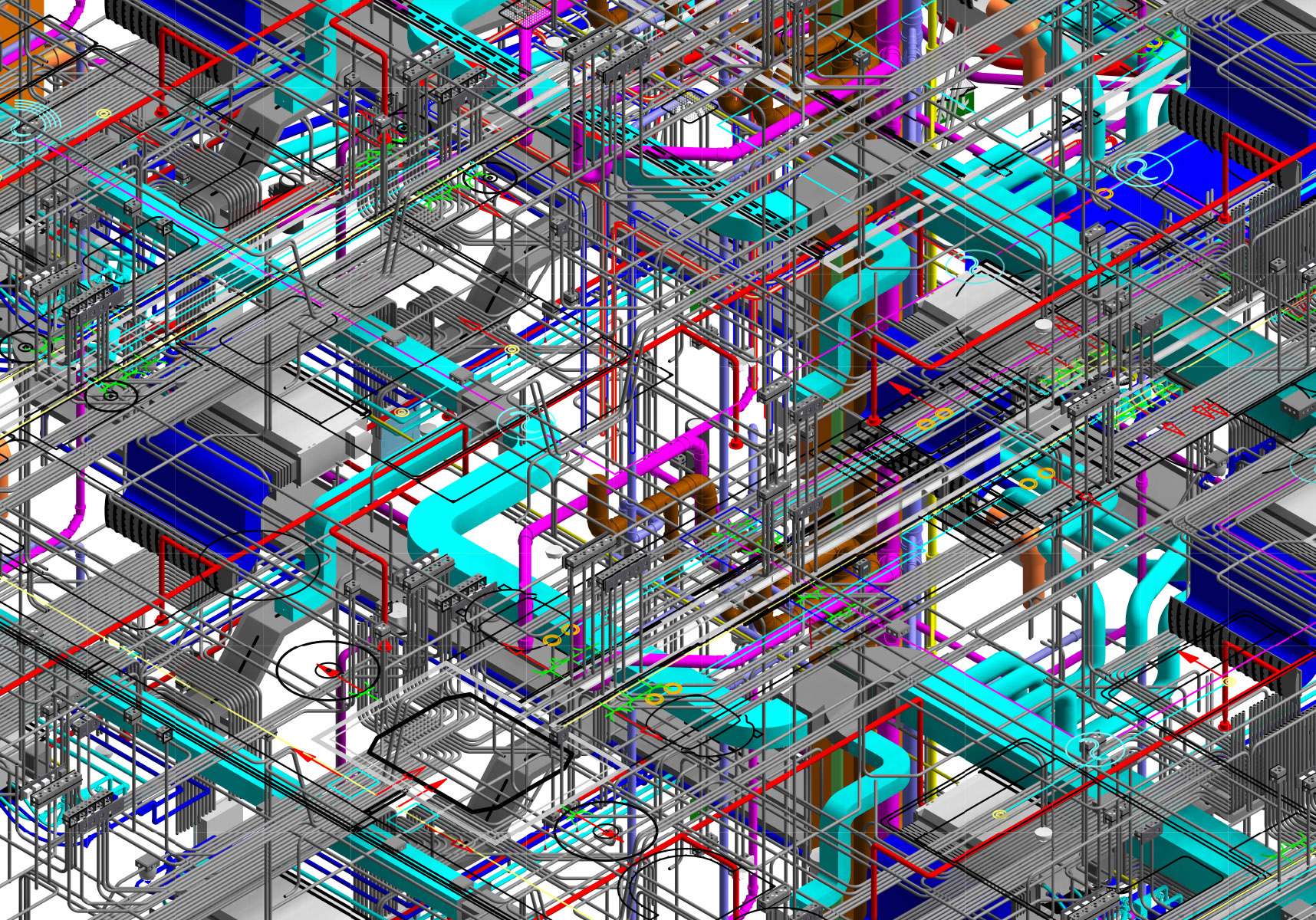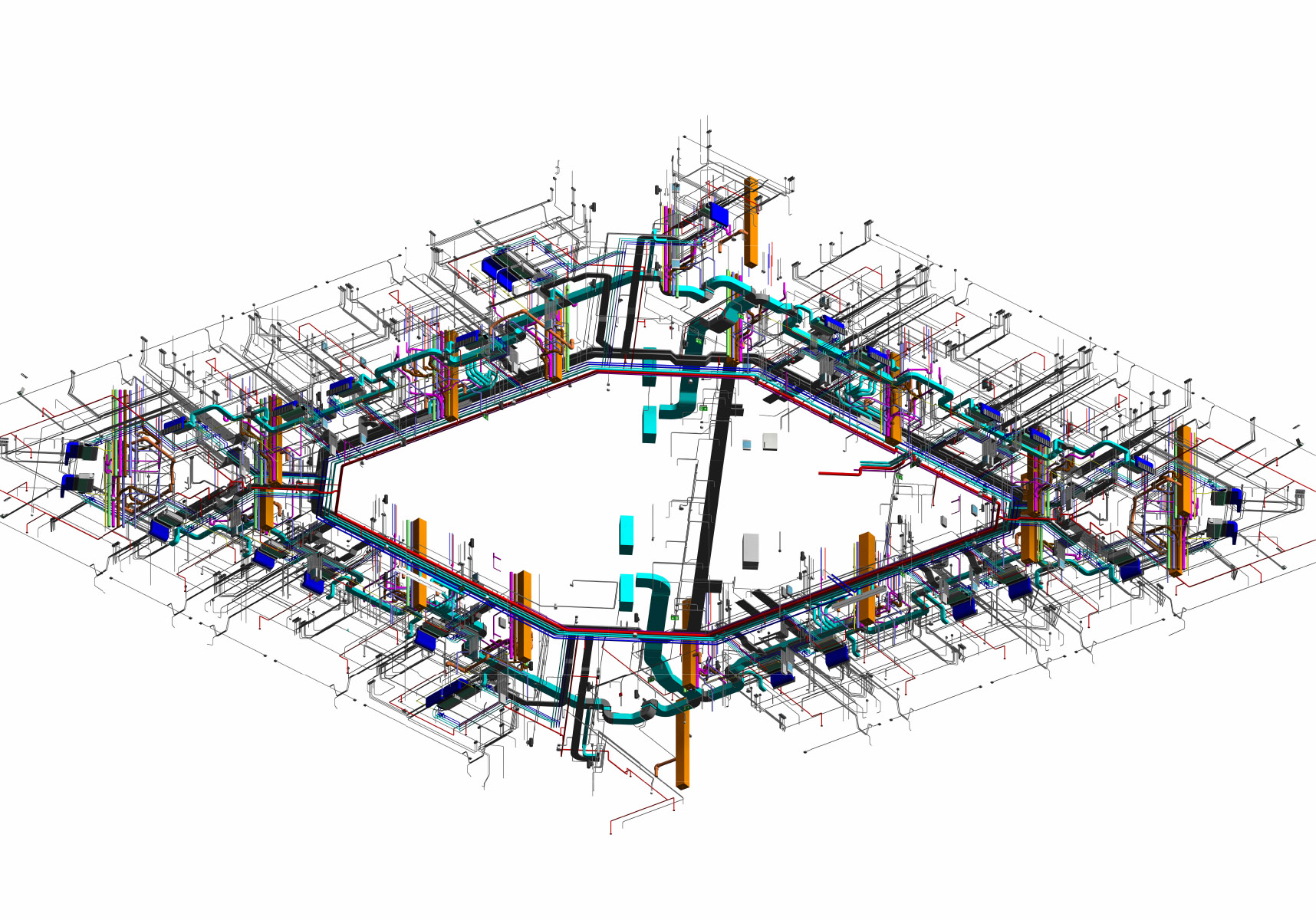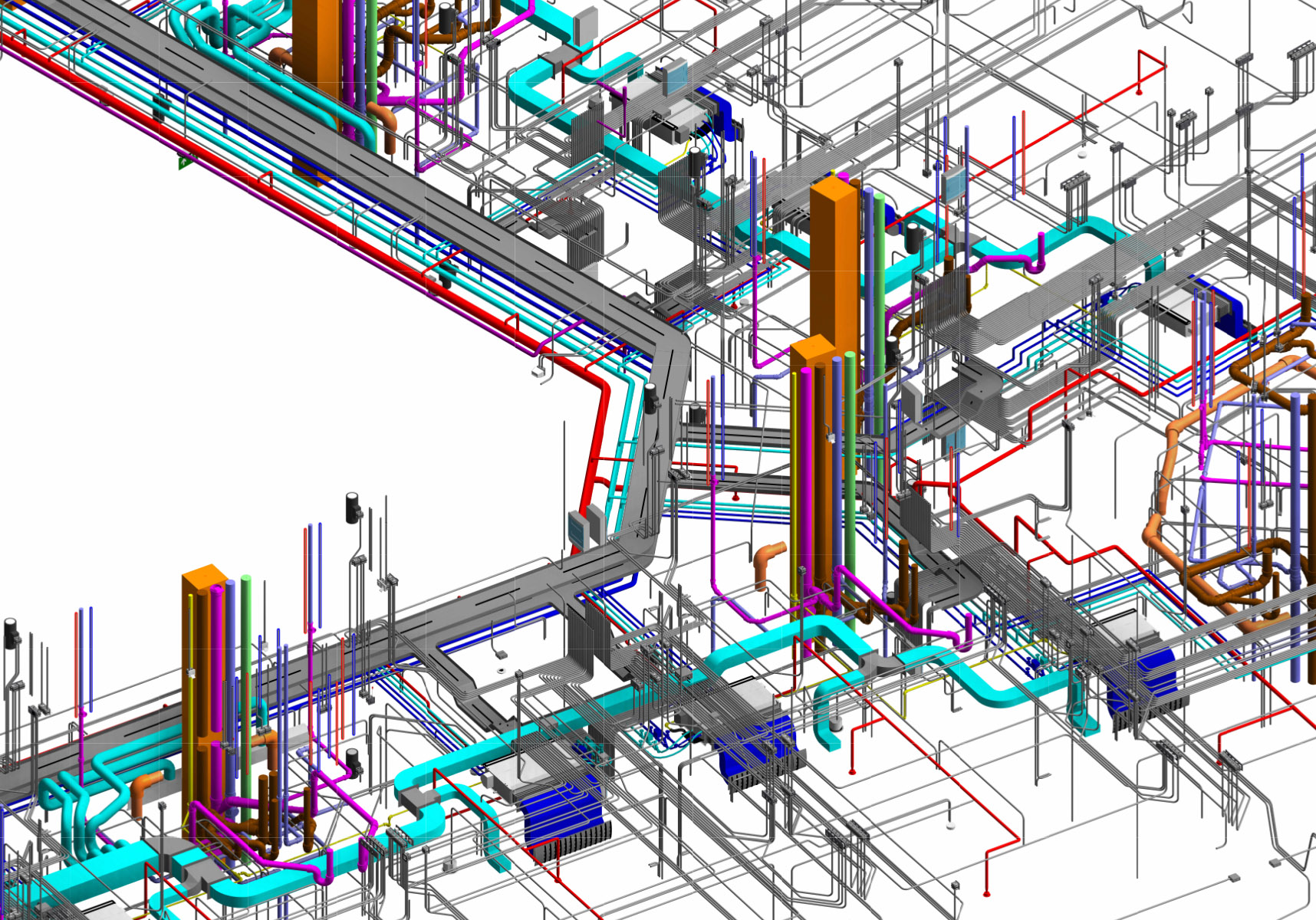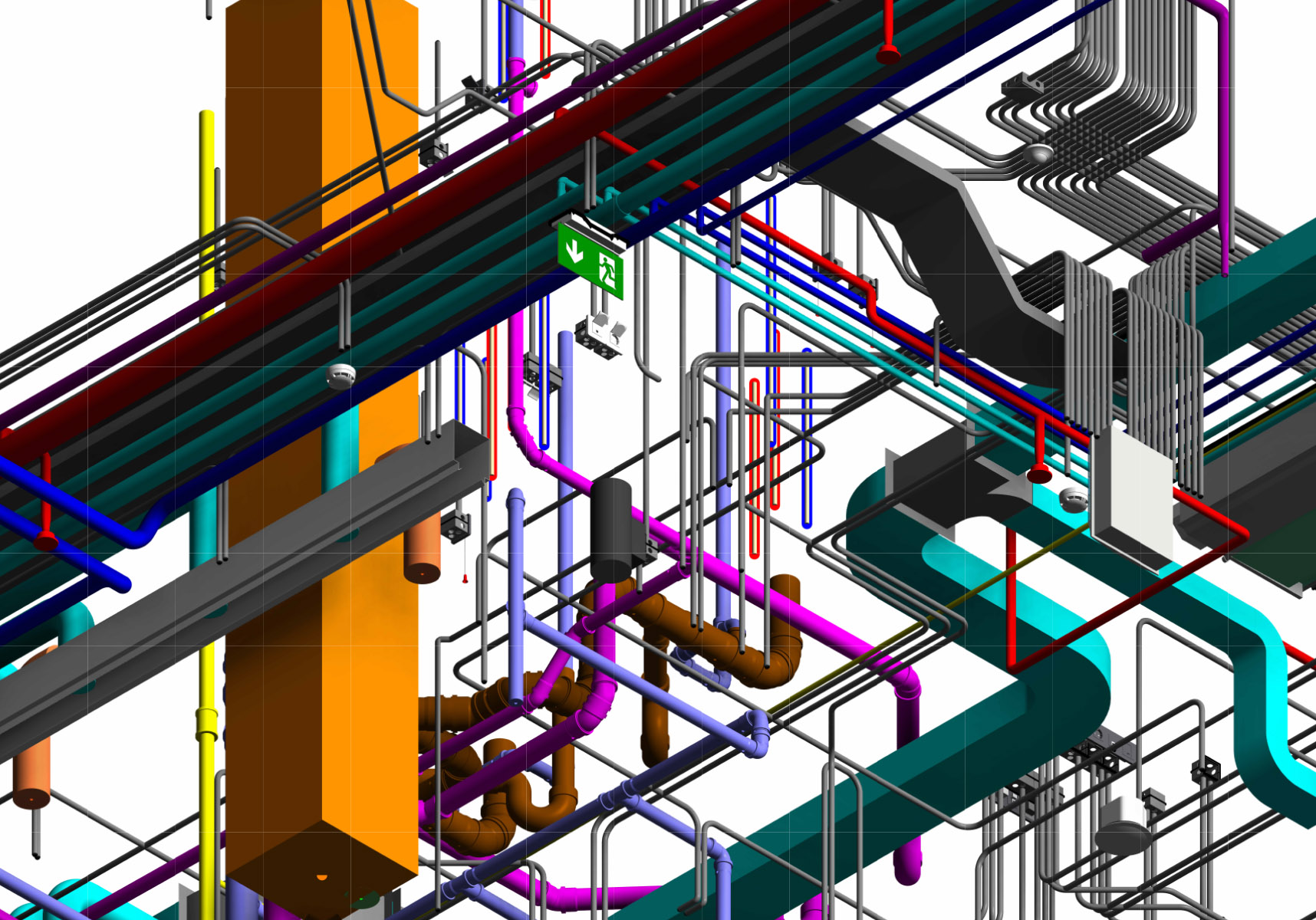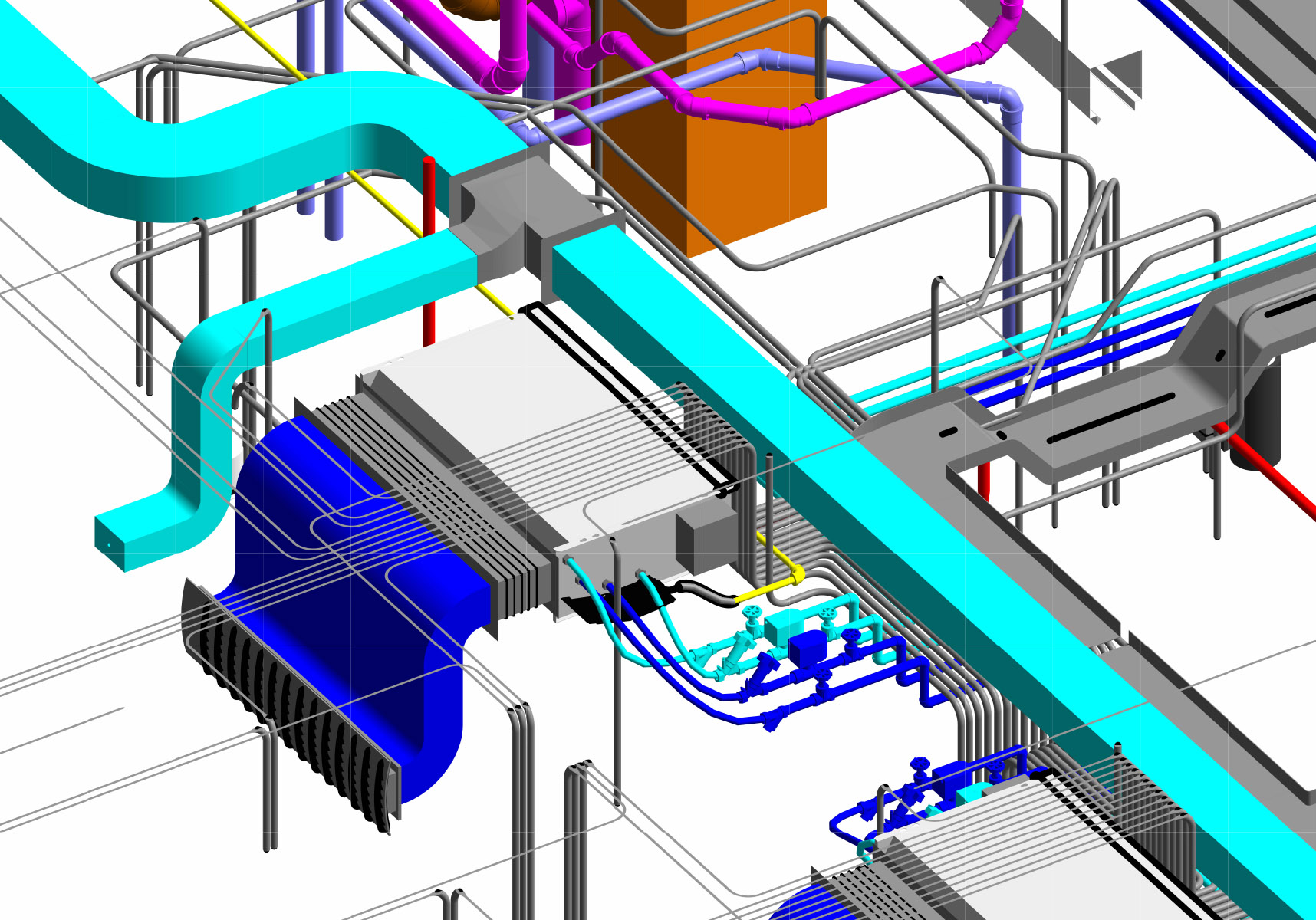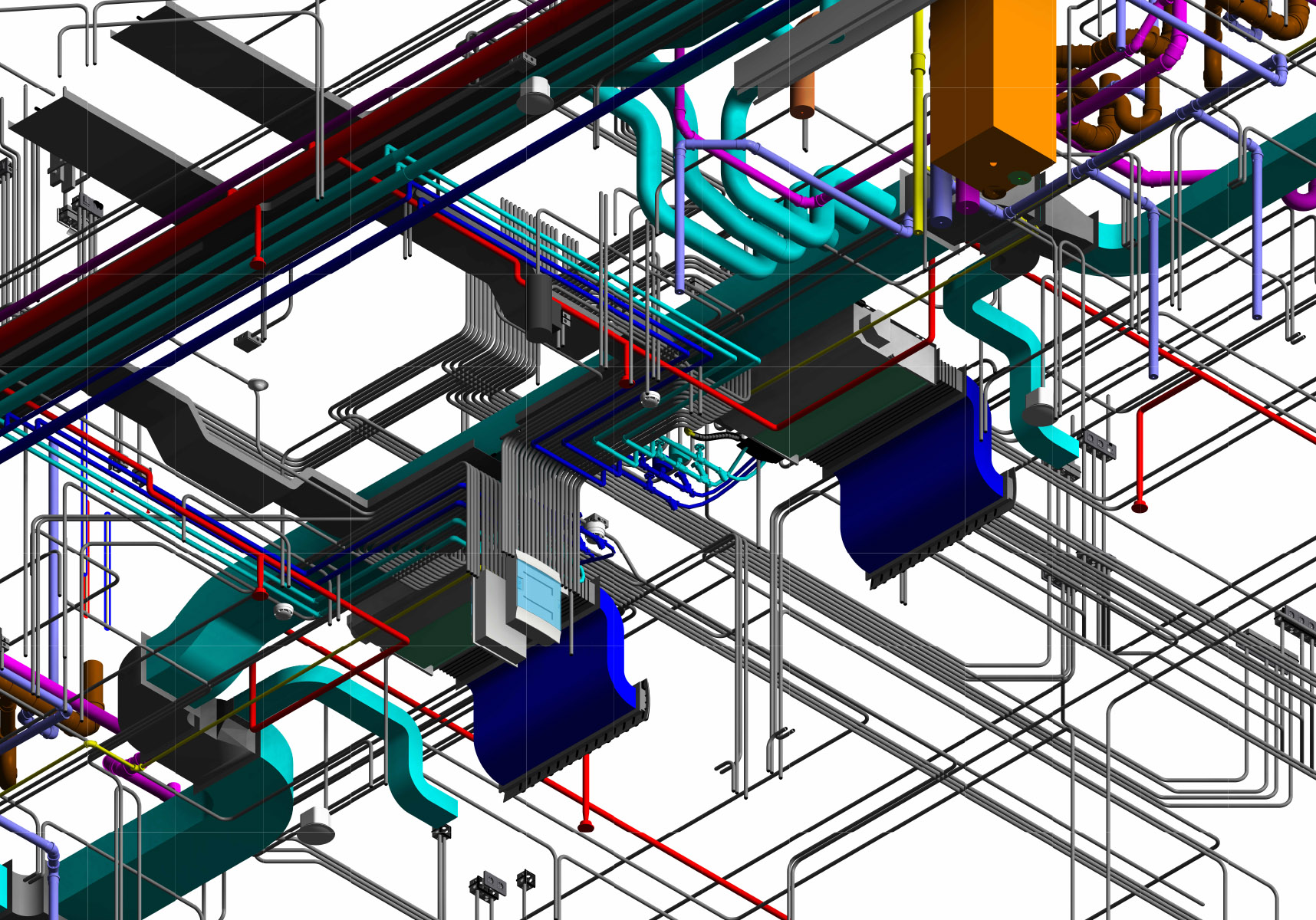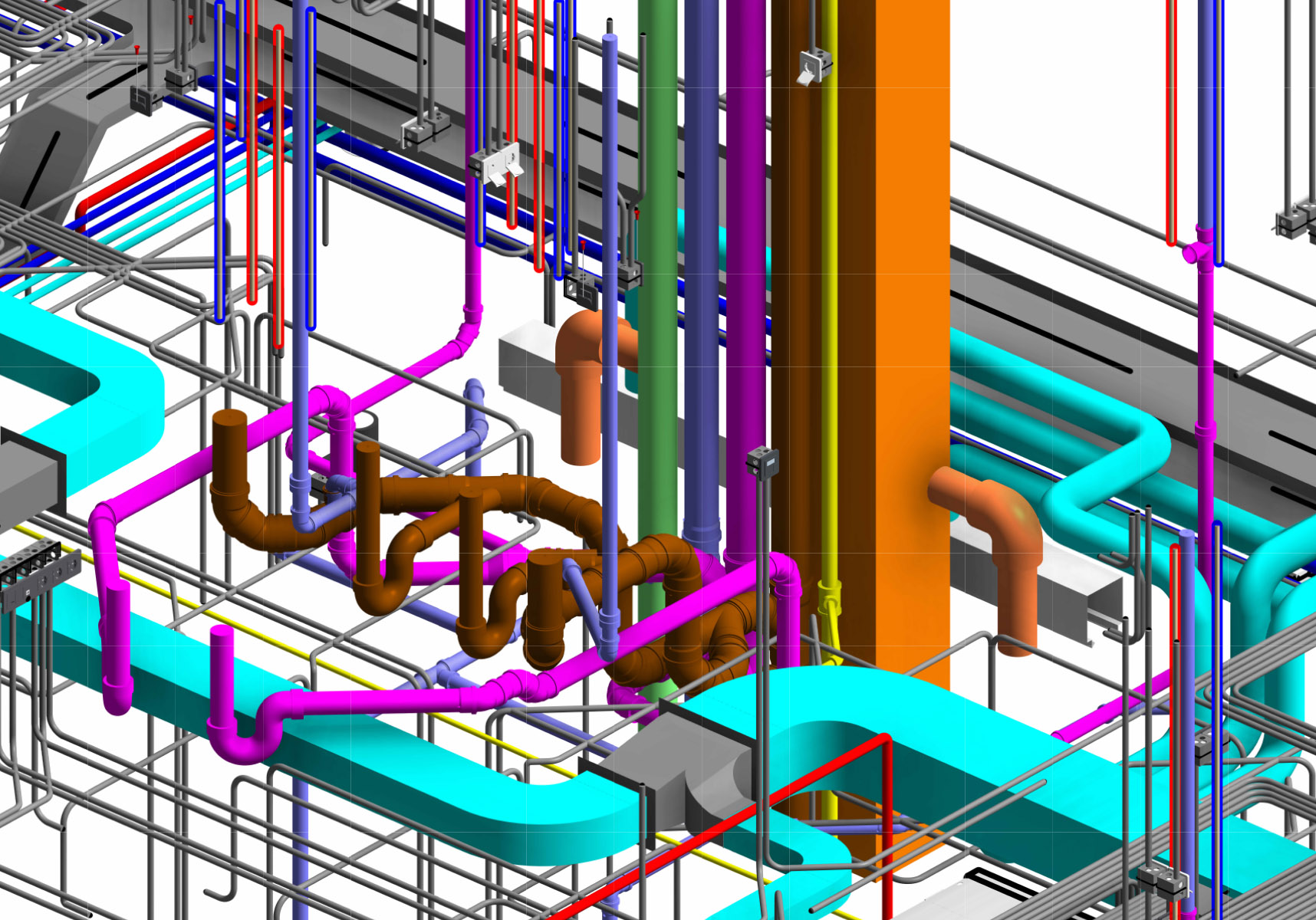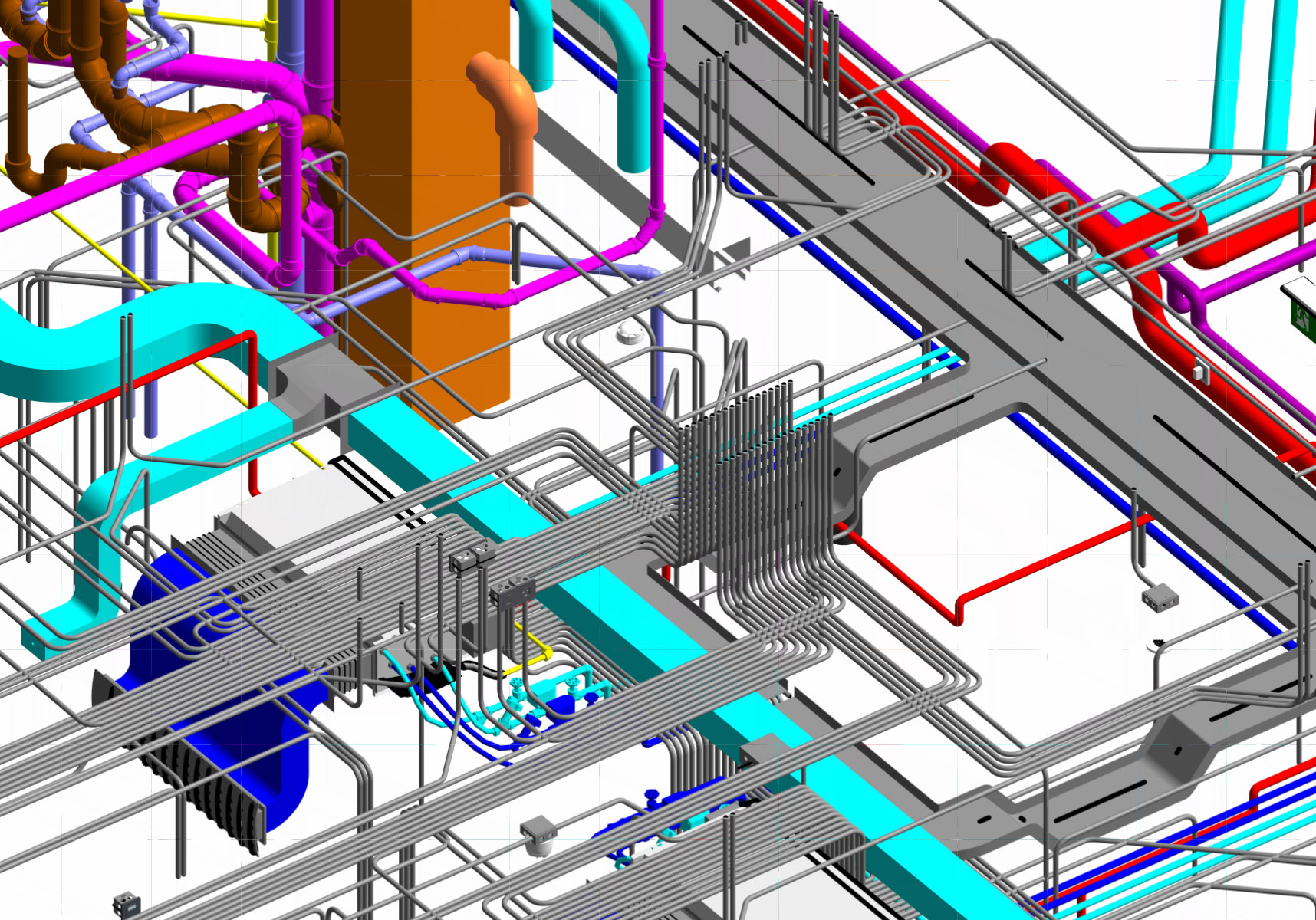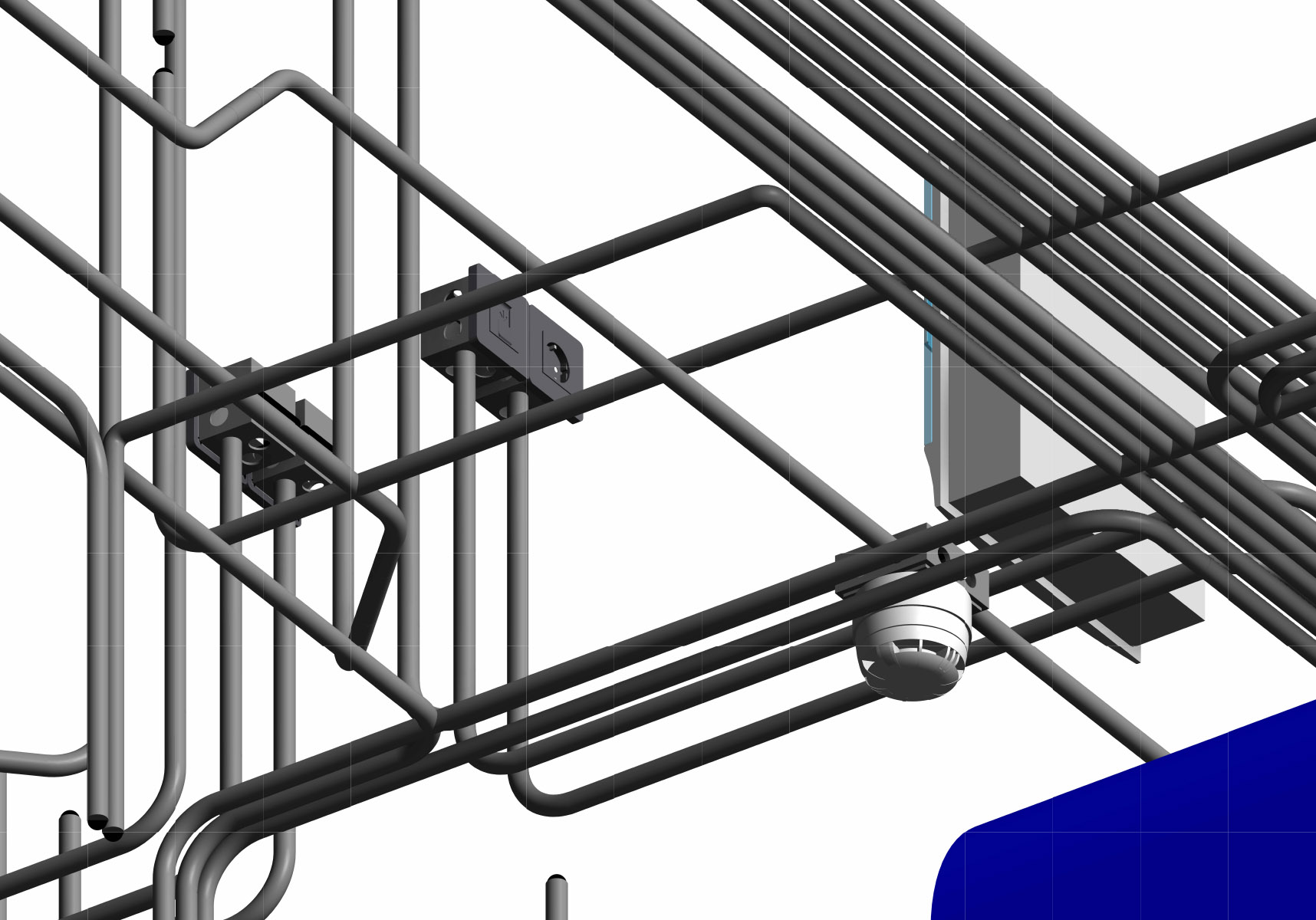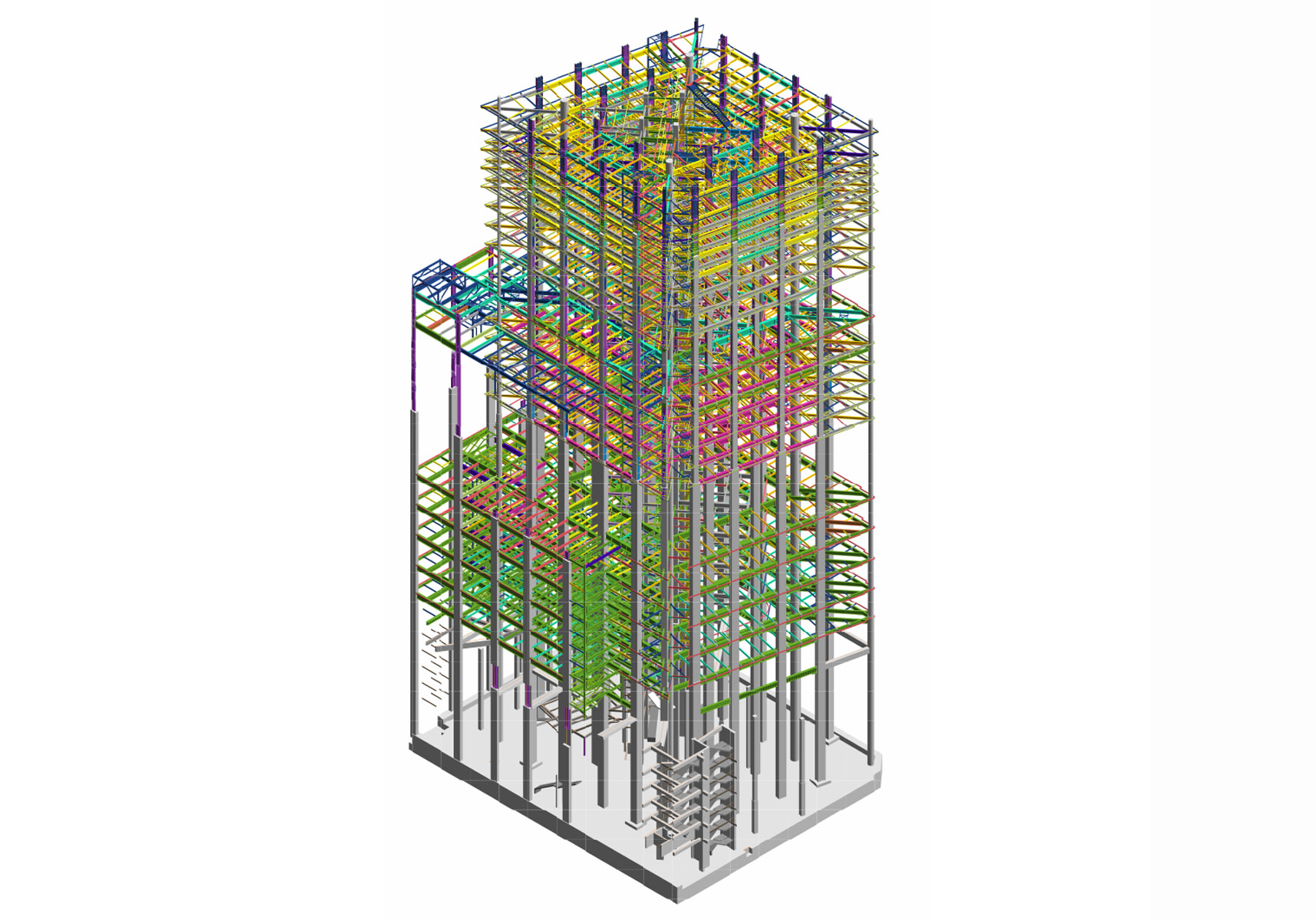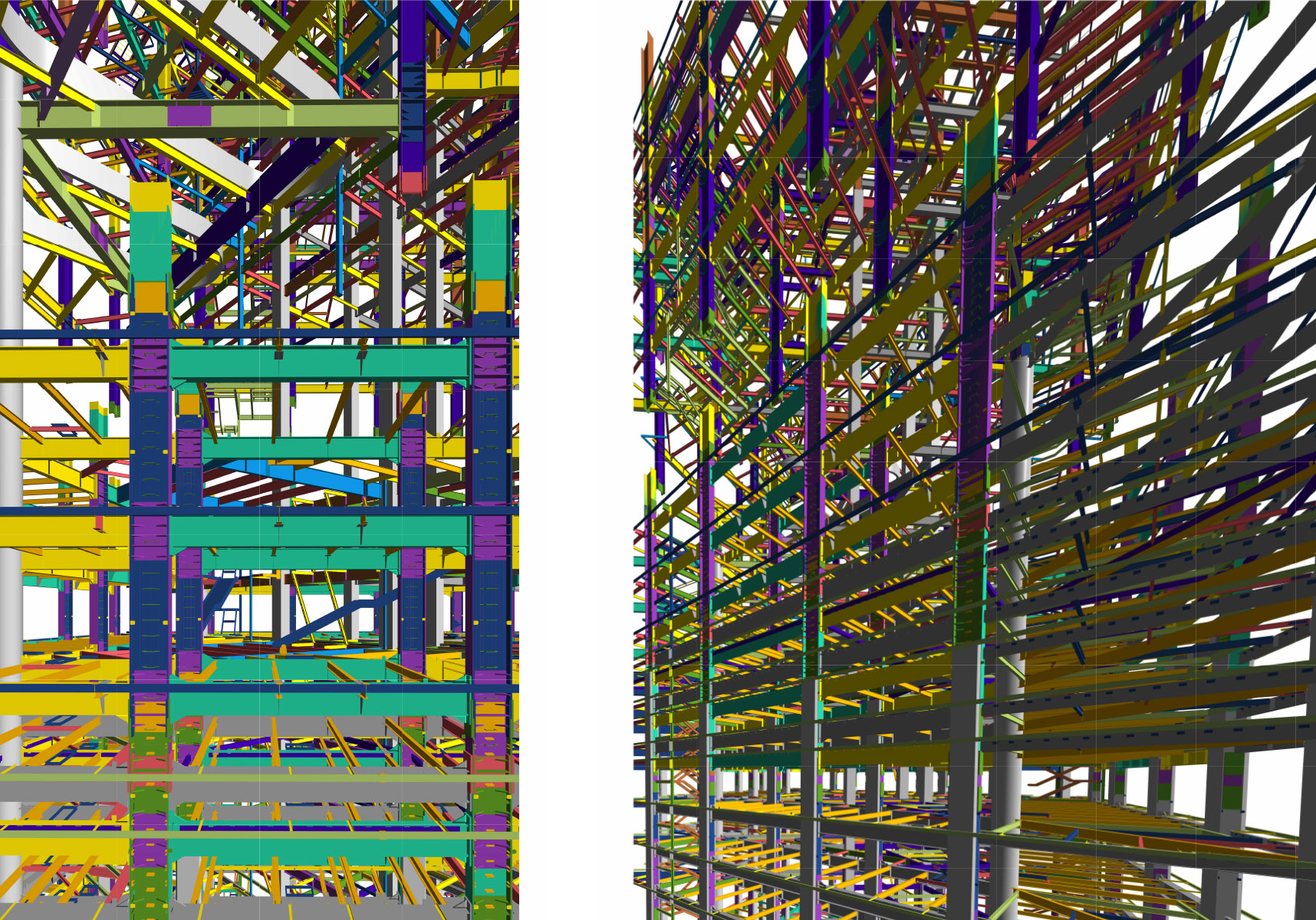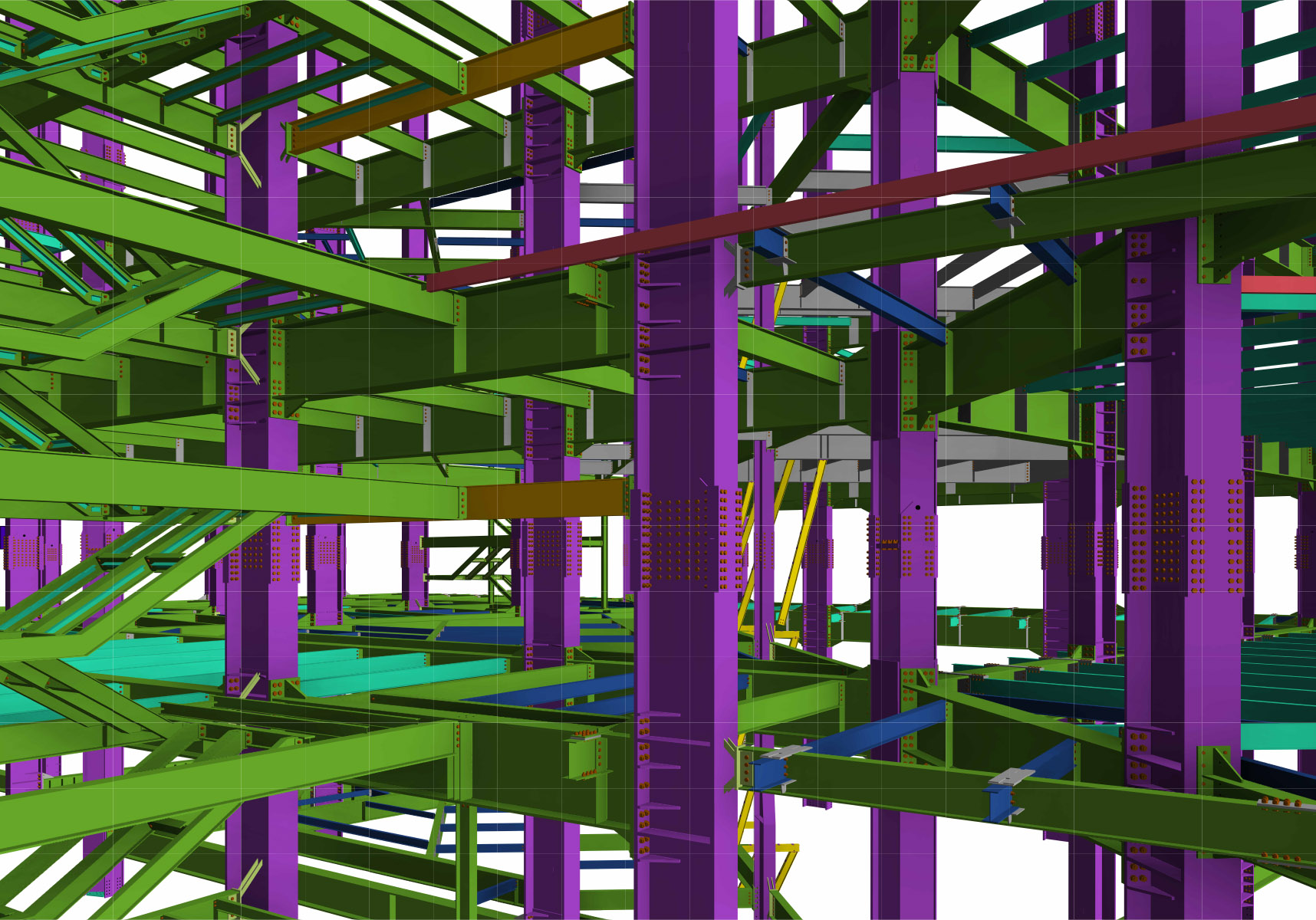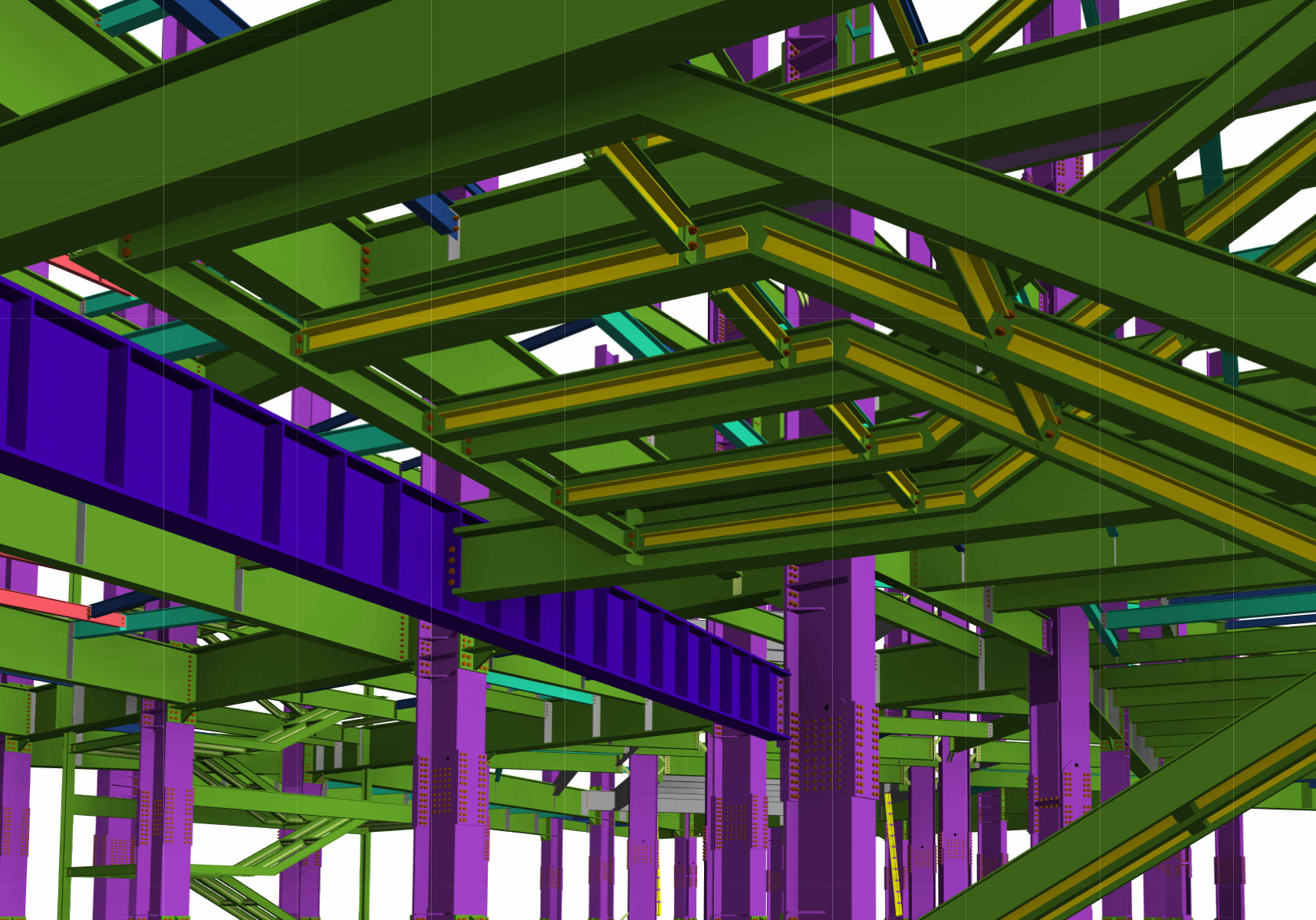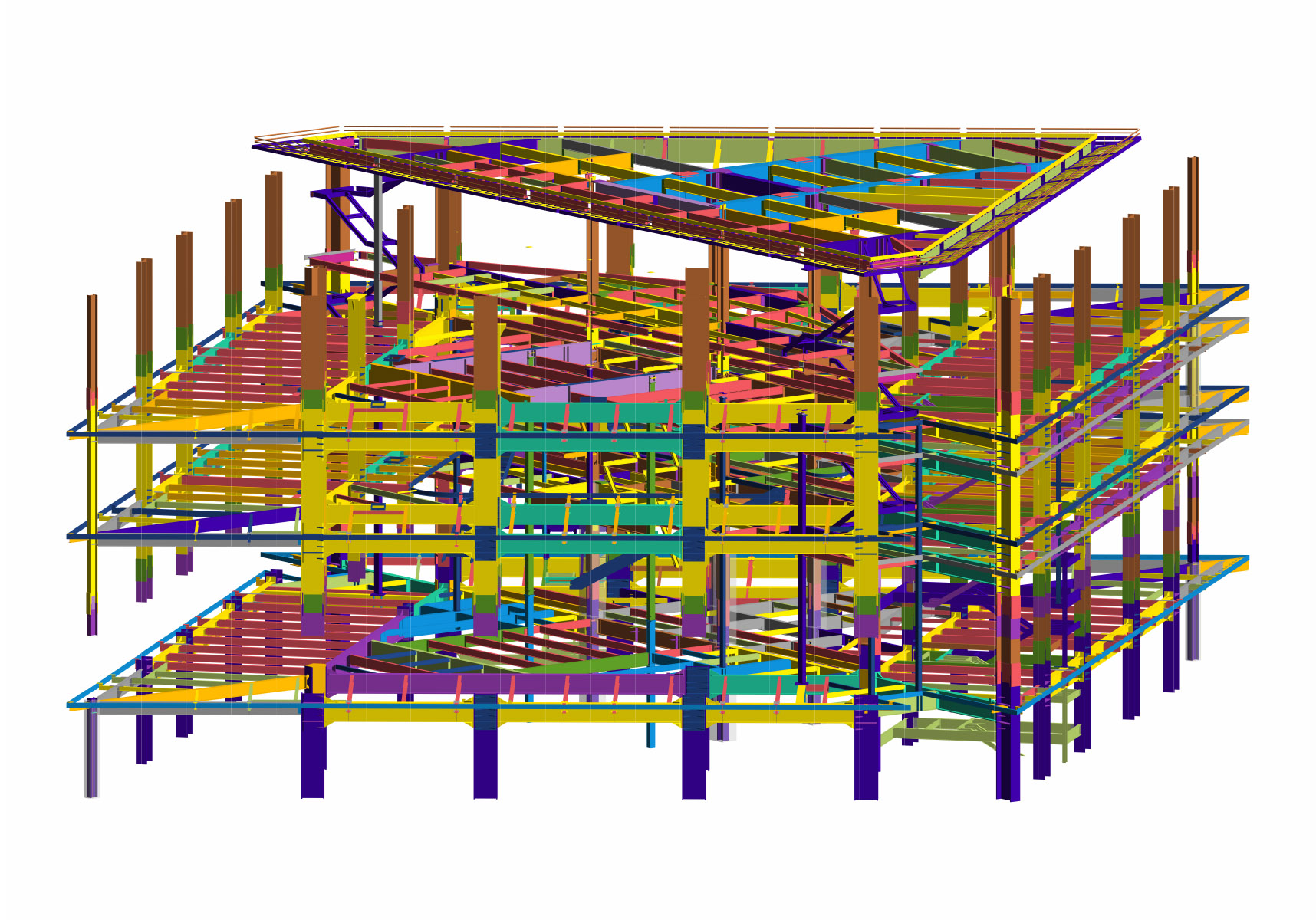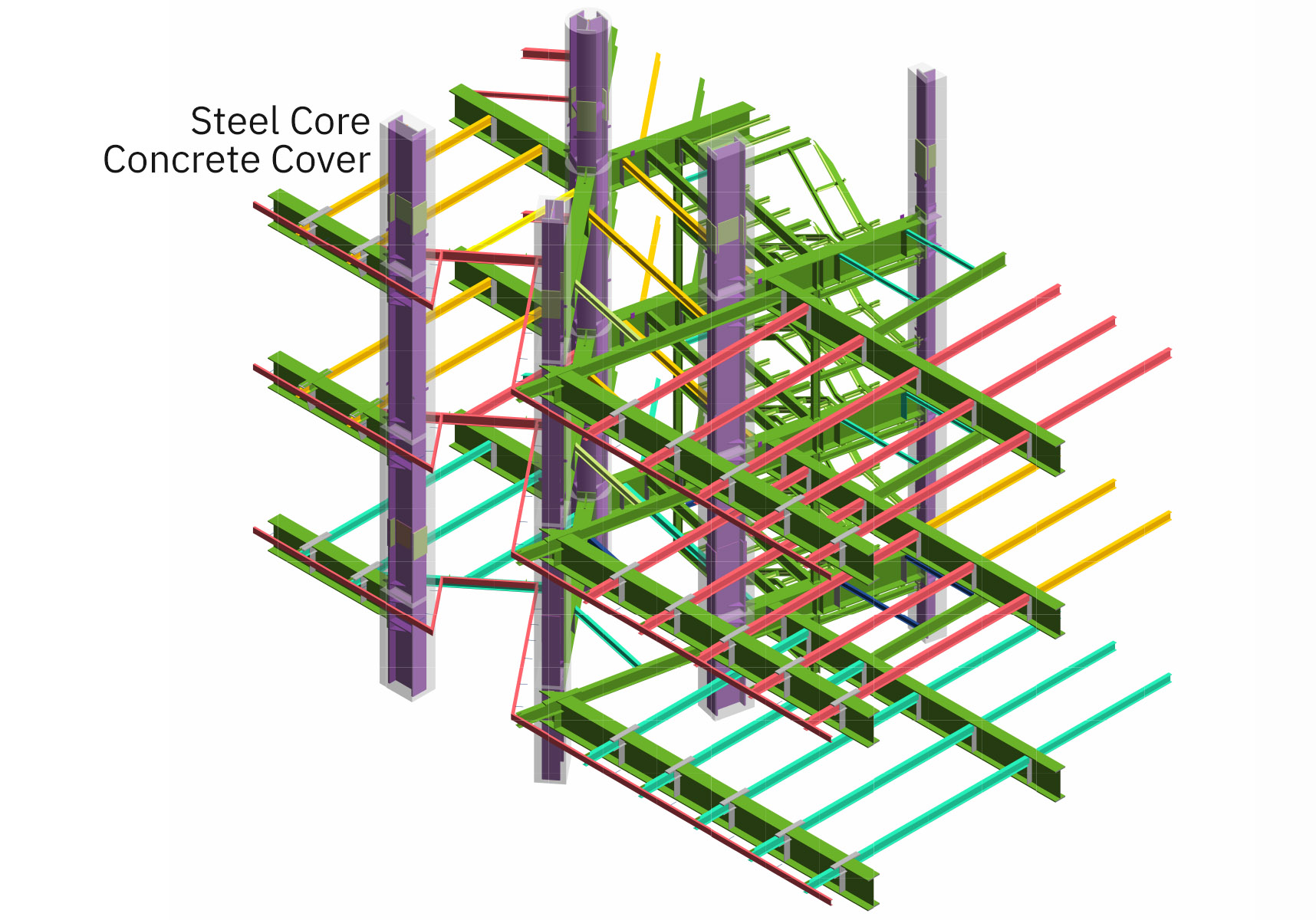[MELAL]
Business Hotel
Project Location: Tehran, Iran
Period of Contribution: 10/2019 – 11/2021
Team Members: Three Architecture and five Structure & MEP BIM modelers
My Responsibilities: Architecture BIM Modeler | Clash Detection & Coordination Leads
Client: Melal Hotel Group, Investment Department
Melal Business Hotel is a 26-story mixed-use hospitality development strategically located near Vanak Square, Tehran’s central business district. Designed to accommodate both business and leisure travelers, the hotel features 373 guest rooms, offering a diverse range of accommodations: • Single Rooms: 18 • Standard Rooms: 256 • Junior Suites: 88 • Executive Suites: 9 • Presidential Suites: 2 With a total built-up area of 65,346 sq. m, the project integrates high-end hospitality functions with state-of-the-art architectural and structural solutions.
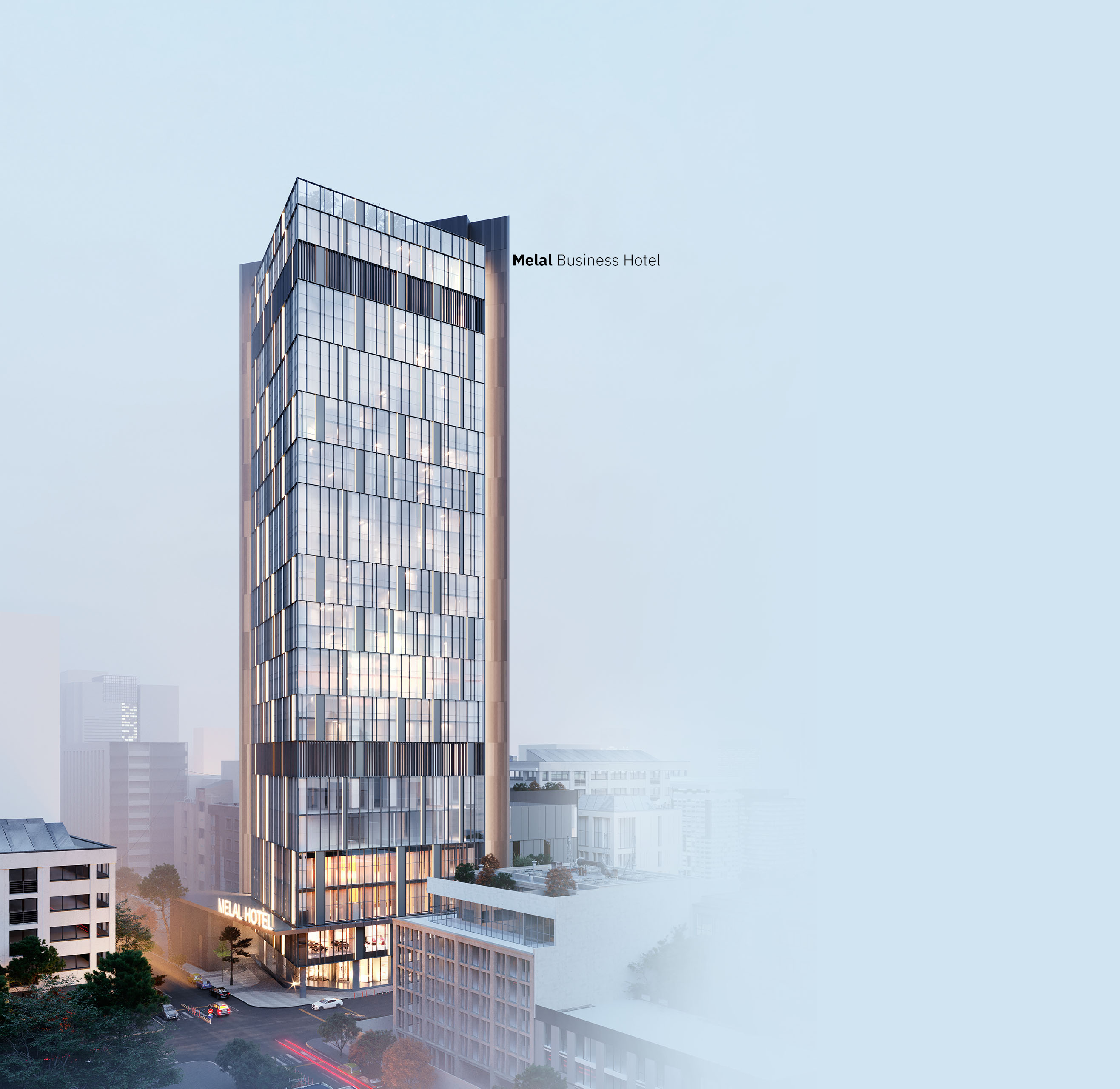
The building’s structural system consists of a reinforced concrete core combined with a steel frame, ensuring both seismic resilience and construction efficiency. Currently in the under-construction phase, the project is progressing with the facade installation, marking a significant milestone toward completion. The architectural design emphasizes functionality, spatial efficiency, and contemporary aesthetics, contributing to Tehran’s evolving urban landscape.
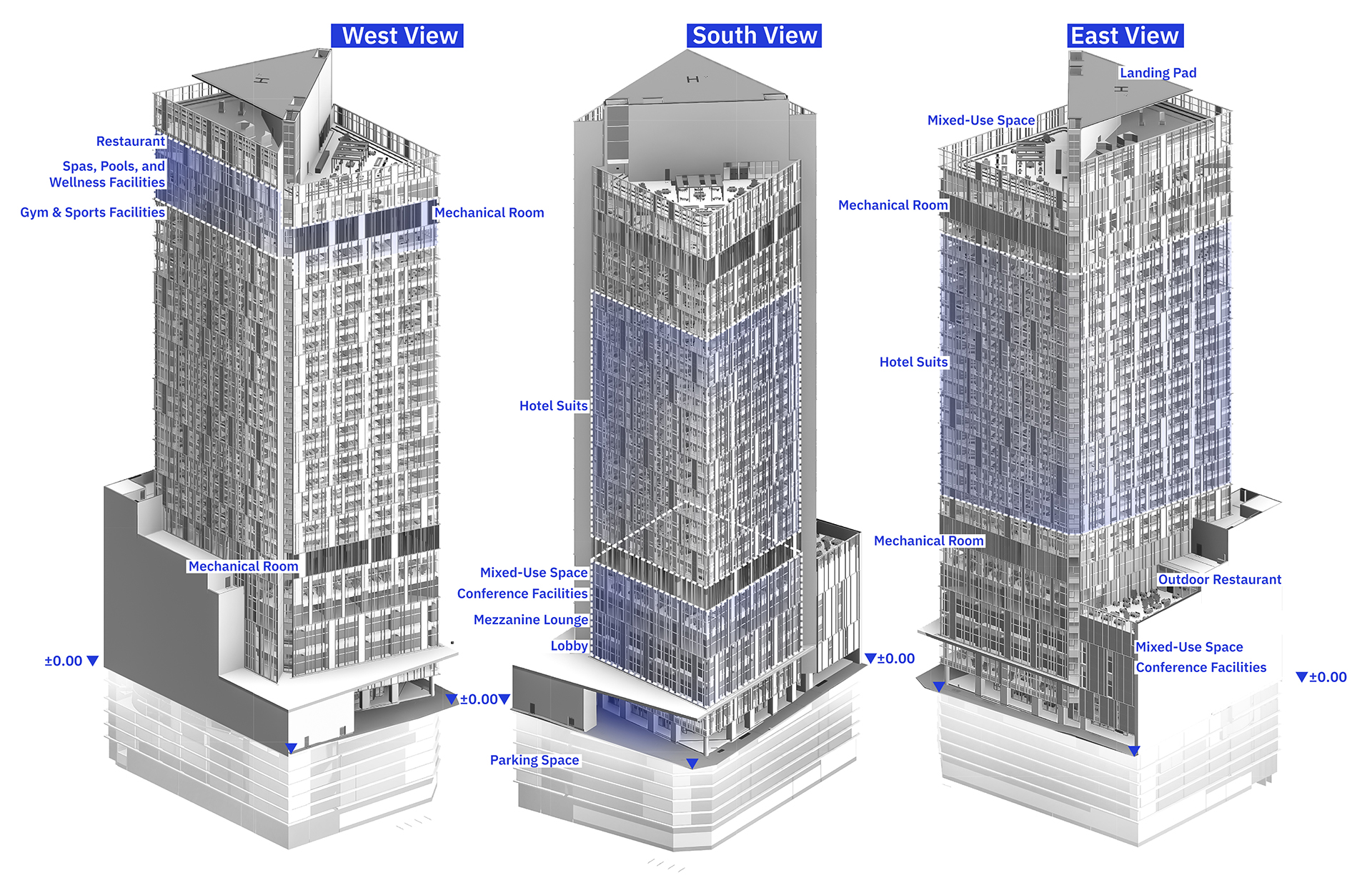
The diagram presents three orthographic axonometric views (West, South, and East) of the Melal Business Hotel, illustrating the vertical organization and spatial distribution of its core functions.
Below are sample technical floor plans from the project, demonstrating the spatial organization and architectural detailing of the finalized documents. Specific areas have been enlarged to emphasize the precision of these drawings, showcasing key design elements, architectural components, and technical annotations. — 10 Documents
Below are callout sheets highlighting the design of various rooms and spaces within the project. Each sheet includes isometric 3D models, detailed plans, and section drawings, providing comprehensive documentation for over 400 specific space within the building model. —5 Documents
The interior design of the project has been developed by a renowned consulting firm, drawing inspiration from both modern and historical architecture of Tehran. The raw renderings were produced using Revit’s V-Ray renderer, providing realistic visualizations of the design. All materials, from tiles to wall, ceiling, and floor coverings, are based on actual material references selected by the consultant, ensuring alignment with the construction specifications.
Every material and design element has been meticulously modeled within the BIM environment, ensuring a high level of accuracy and coordination. — 8 Visualizations
The Architectural BIM model has been continuously coordinated with the MEP and Structural BIM models to ensure seamless integration across disciplines. All structural, mechanical, plumbing, and electrical elements have been modeled to a Level of Development (LOD) 350, allowing for detailed representation and precise constructability analysis. Ongoing coordination meetings were conducted to identify and resolve conflicts, with a total of 185 hard clashes detected using Navisworks and successfully resolved before finalizing the construction documents.
I was responsible for conducting clash detection tests using Navisworks and played a key role in organizing and managing coordination meetings to facilitate interdisciplinary collaboration and issue resolution.
This isometric view showcases the fully integrated MEP systems modeled at LOD 350, ensuring precise coordination and constructability.
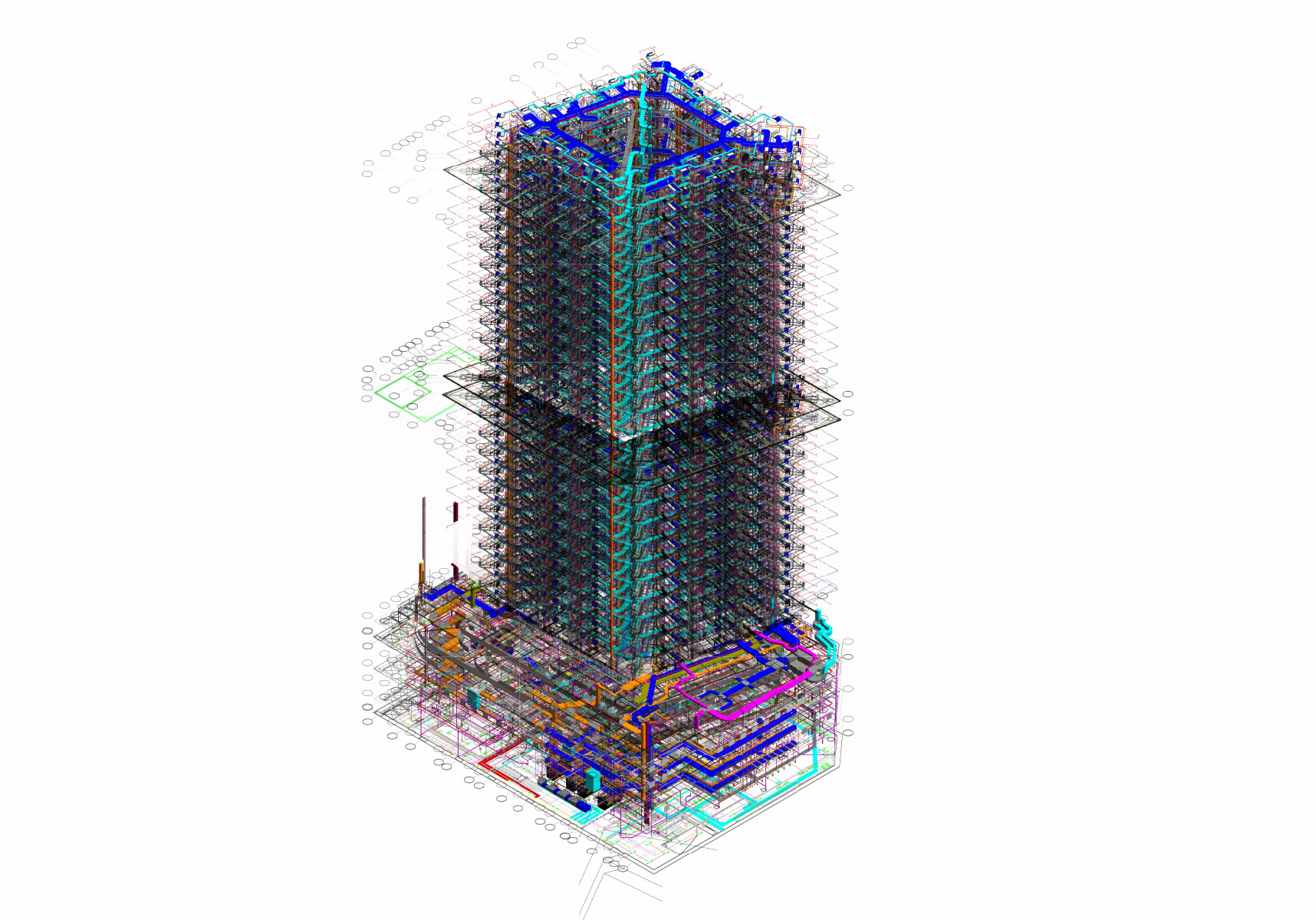
The model includes ventilation equipment such as FCUs, AHUs, and VRF units, along with a complete ductwork system featuring supply, return, and exhaust ducts with fittings, dampers, and insulation. The plumbing networks encompass hydronic systems, domestic hot and cold water, sanitary drainage, and venting, while utility piping includes gas lines, stormwater drainage, and fire suppression systems. Additionally, the fire protection system incorporates sprinklers, suppression equipment, and other fire safety components. The electrical systems are fully detailed with power distribution elements, conduits, cable trays, and panels, complemented by low-voltage components and lighting systems, including electrical devices, sensors, and lighting fixtures. This highly detailed BIM model facilitates clash detection, coordination, and seamless integration of all mechanical, electrical, and plumbing systems, optimizing project efficiency and accuracy.
— 10 Visualizations of the MEP Model
A highly detailed BIM structural model enables accurate coordination, clash detection, and constructability validation, ensuring an efficient and optimized design process for the hotel’s construction.
This isometric view showcases the LOD 300 BIM structural model, ensuring precise detailing, connection accuracy, and seamless constructability. The model integrates a combination of steel and concrete elements, including reinforced concrete foundations, columns, beams, and slabs, along with steel structural components such as columns, beams, girders, trusses, and bracing systems. It also features composite structures, including concrete-filled steel columns and beams, as well as composite floor decks.
11 Visualizations of the Structure Model.
Key secondary structural elements such as staircases, elevator shafts, balconies, and cantilever structures are precisely defined, ensuring smooth integration with architectural and MEP systems. The roof structure is modeled in detail, with steel purlins, rafters, decking, and reinforced concrete slabs, while seismic and wind load-resisting components such as braced frames, shear walls, and dampers enhance the building’s resilience.
Concrete-filled steel columns (CFSTs) are represented with a steel core encased in concrete, including detailed connections to beams, slabs, and foundations. The model captures base plates, reinforcements, penetrations, and structural joints, as illustrated below.

This video presents the Revit Architecture Model using the Section Box tool, revealing detailed architectural elements of the architecture BIM model.
